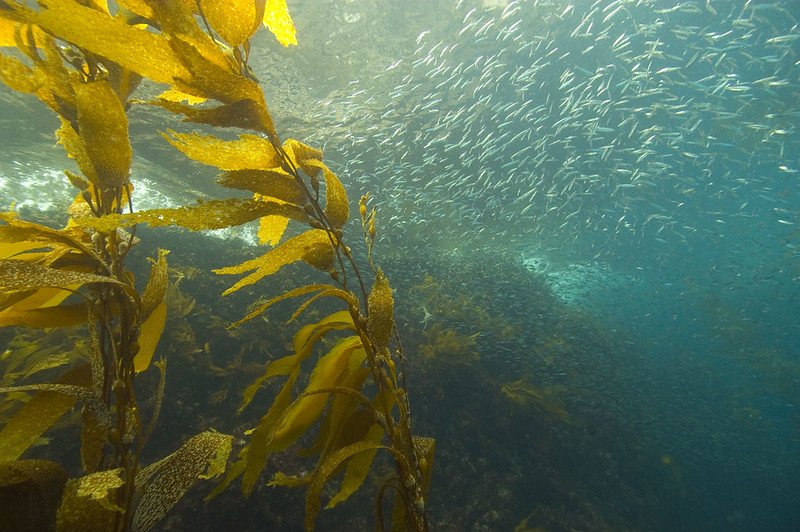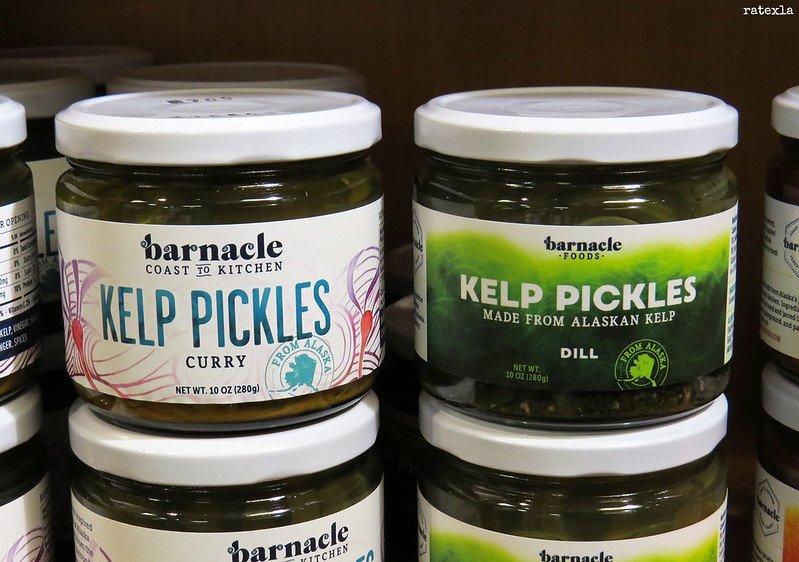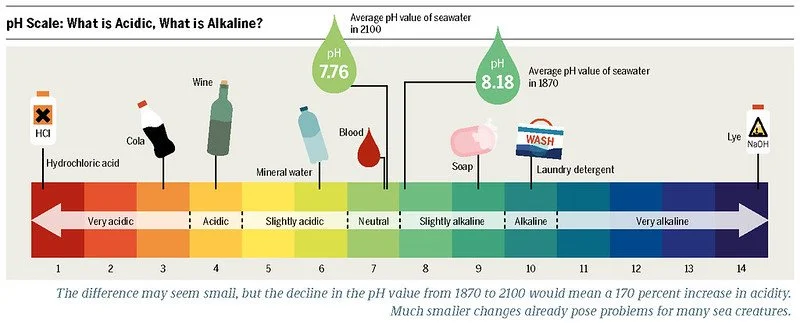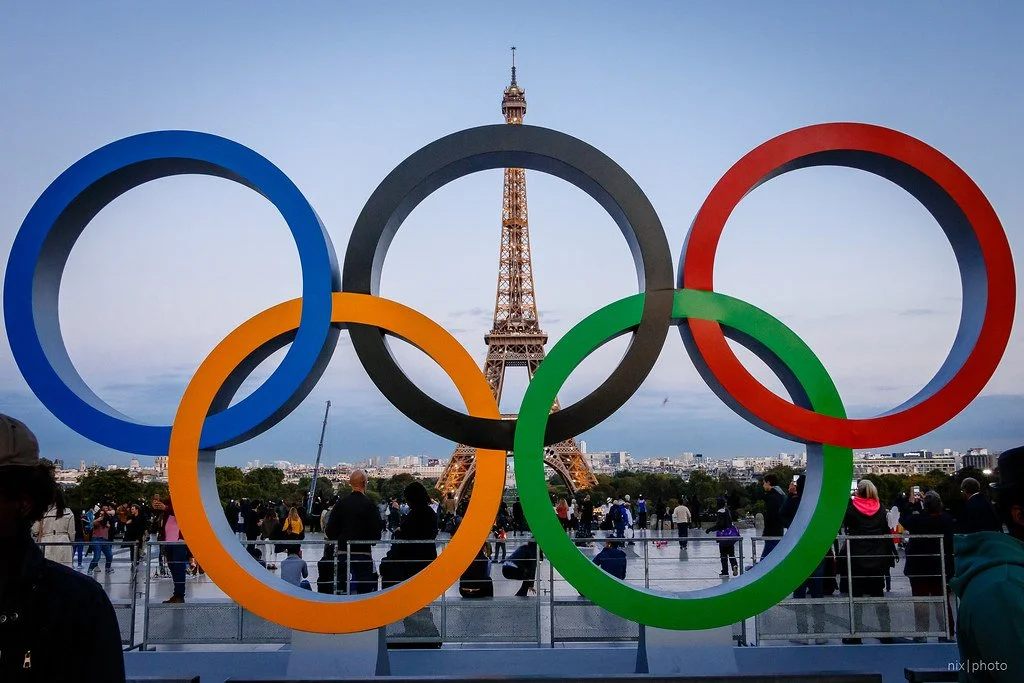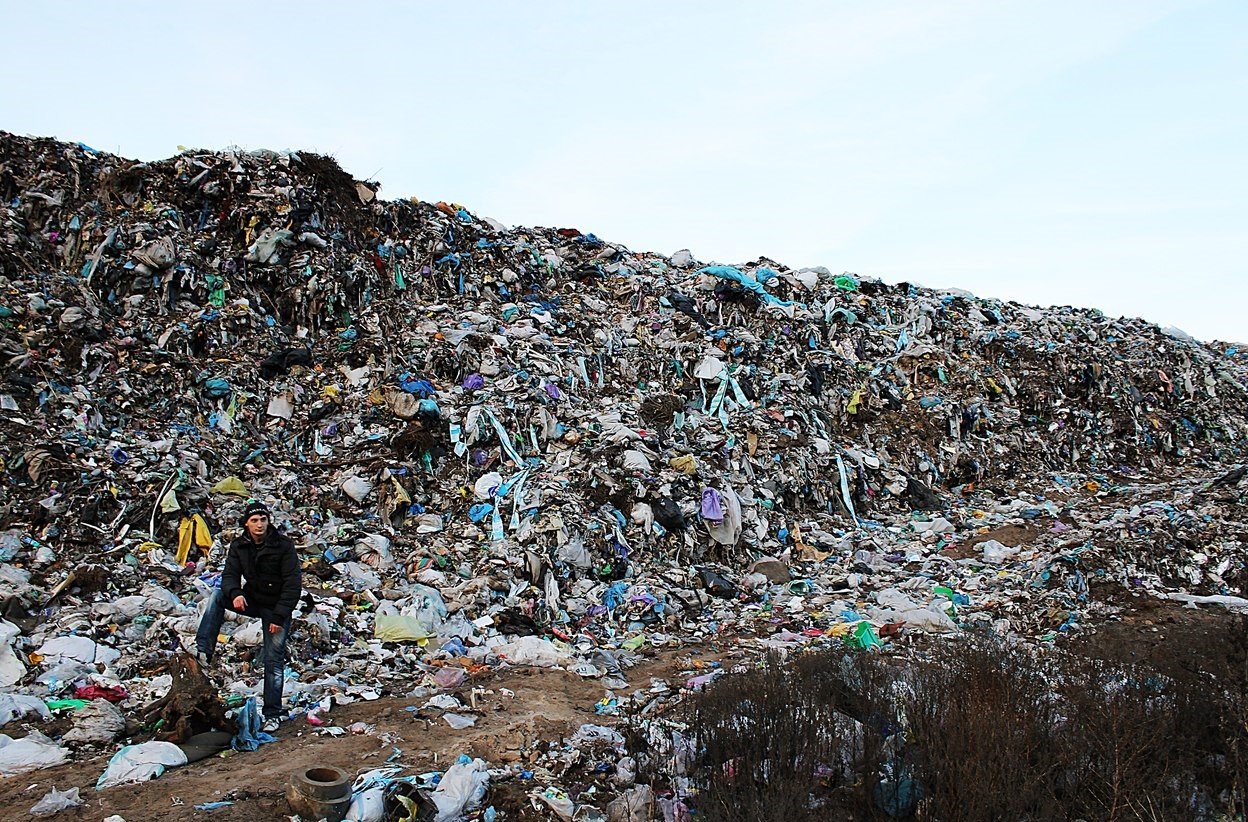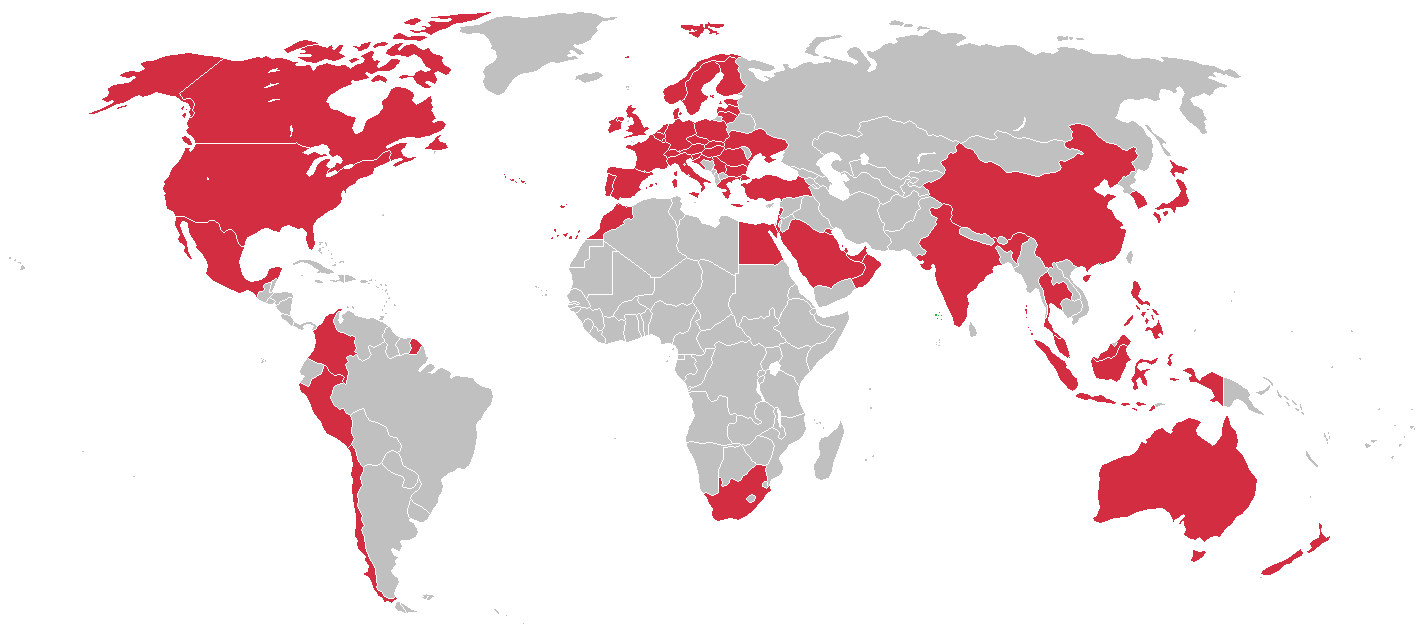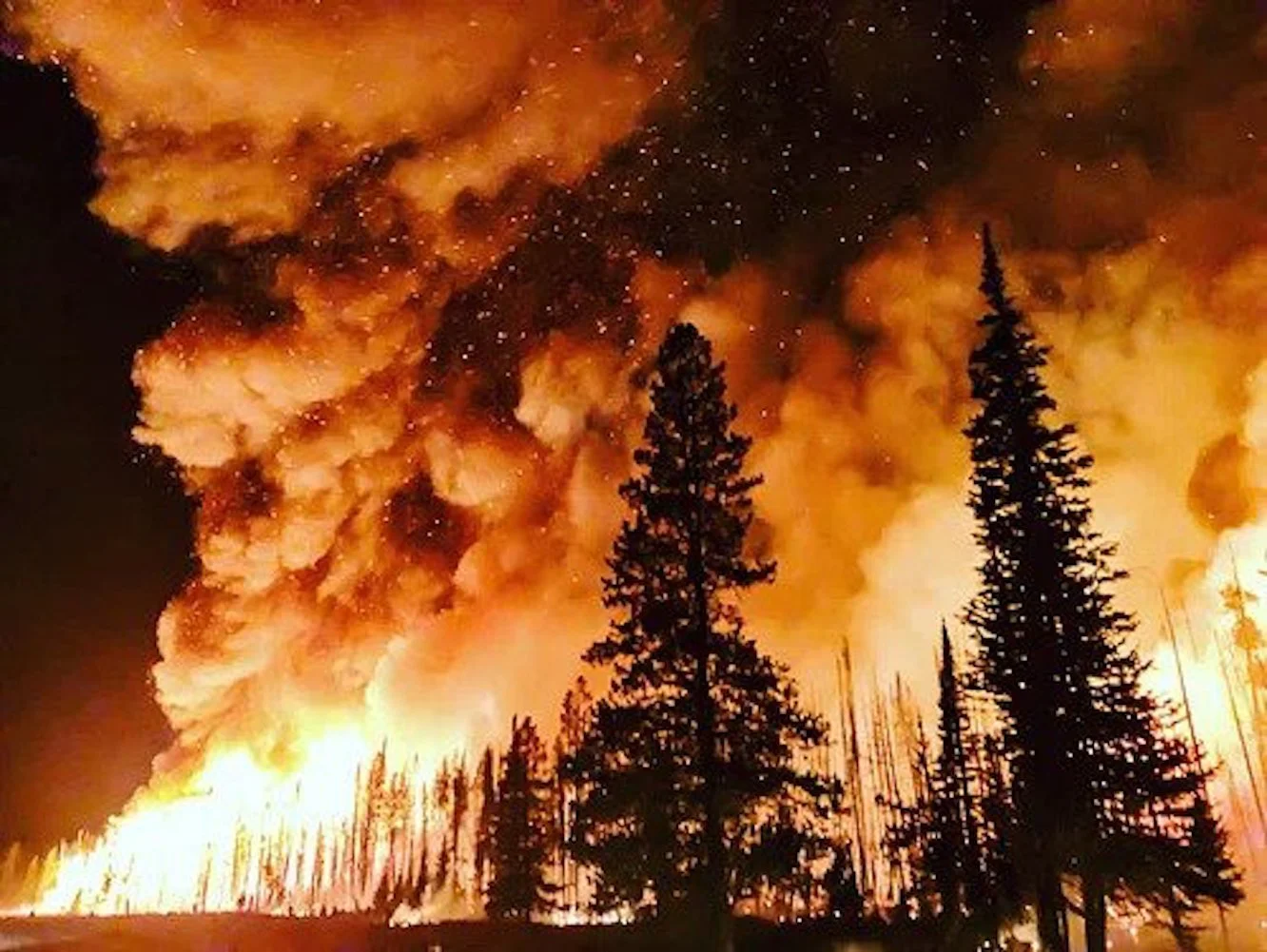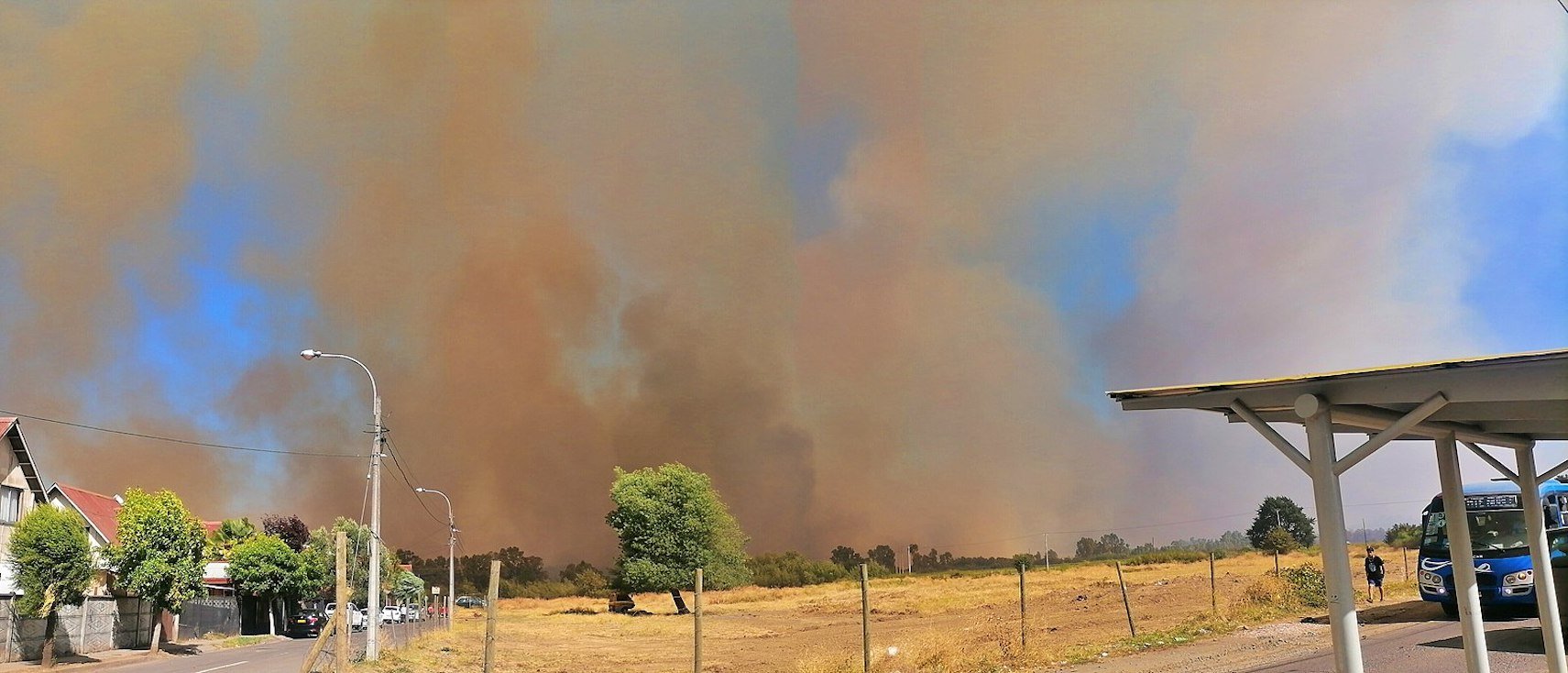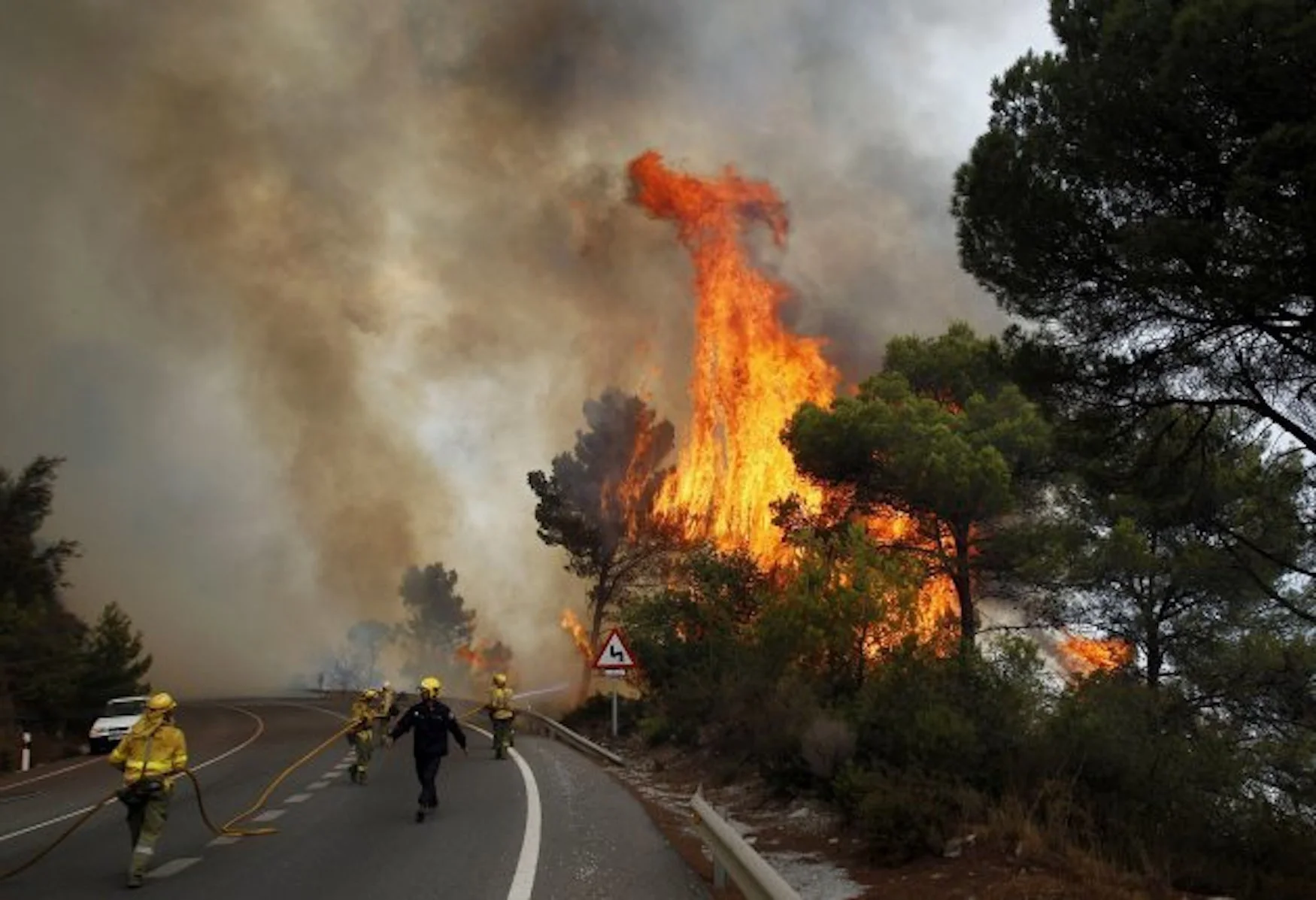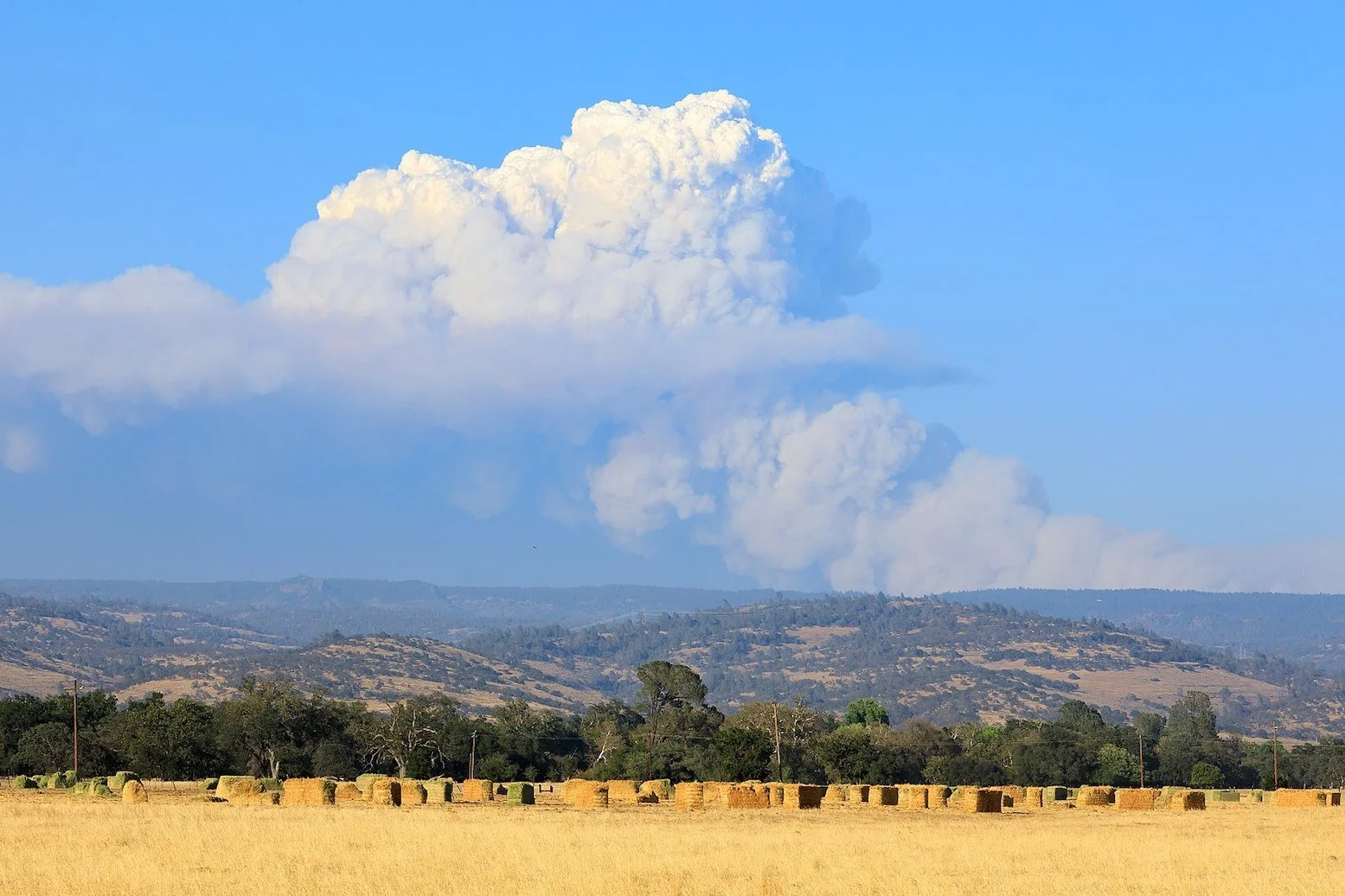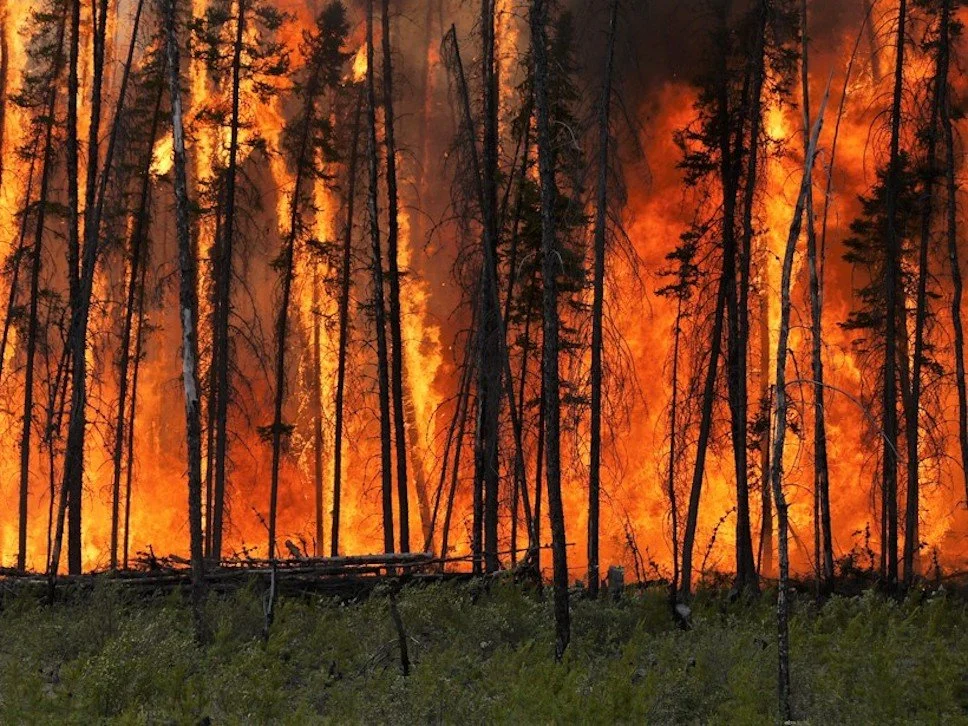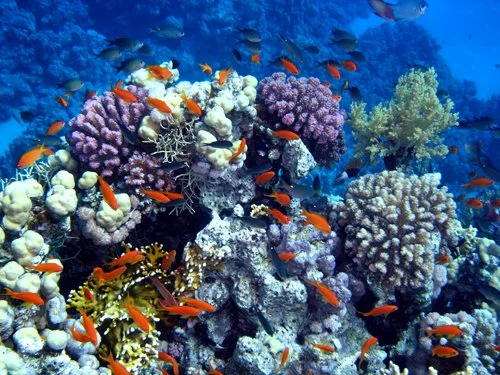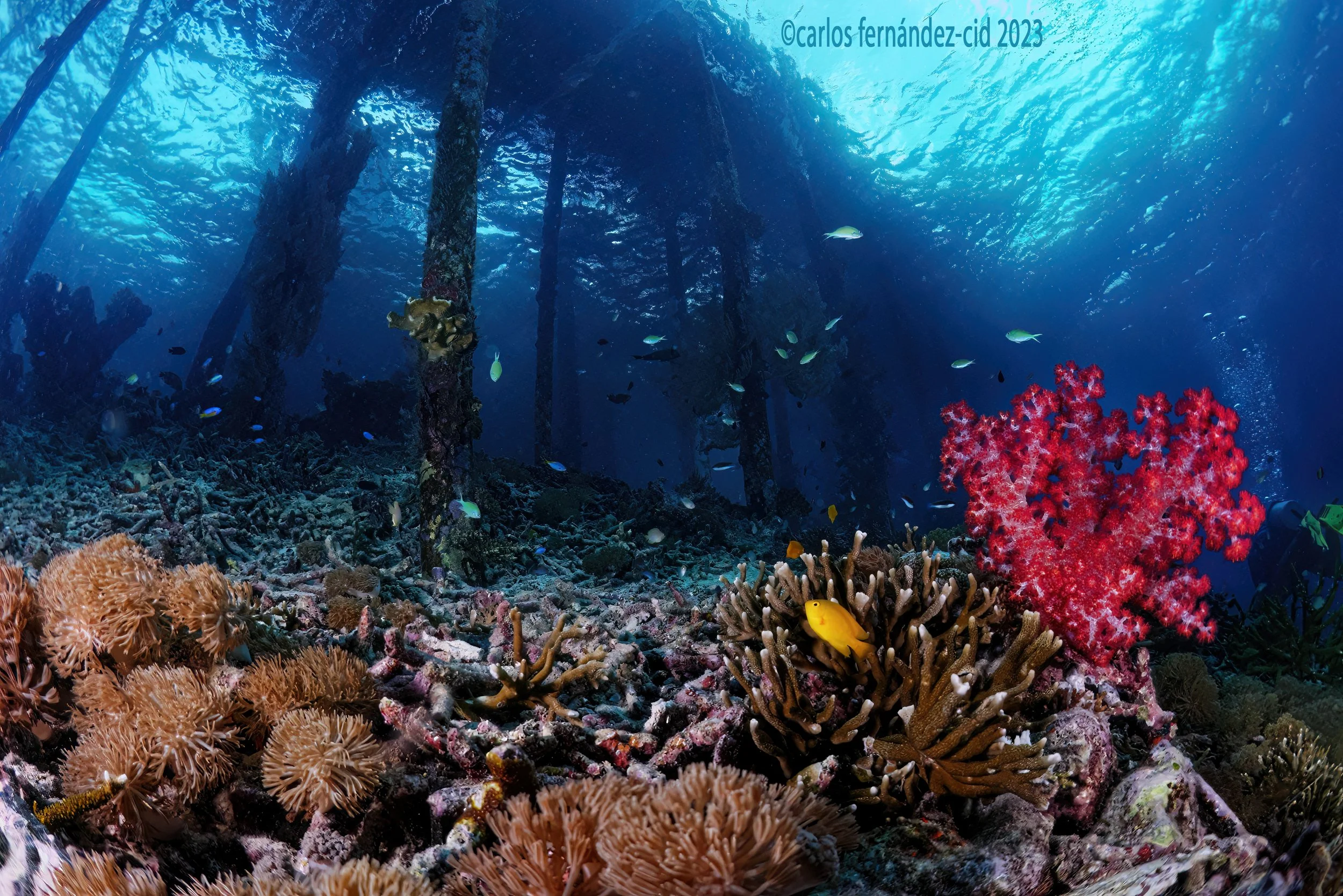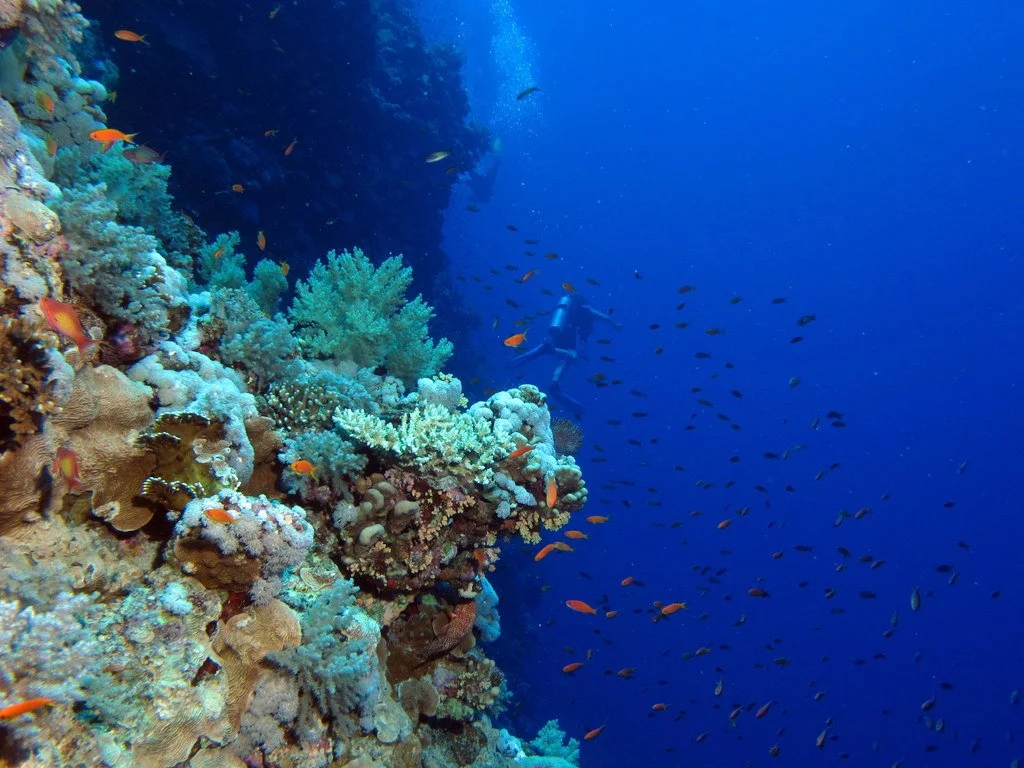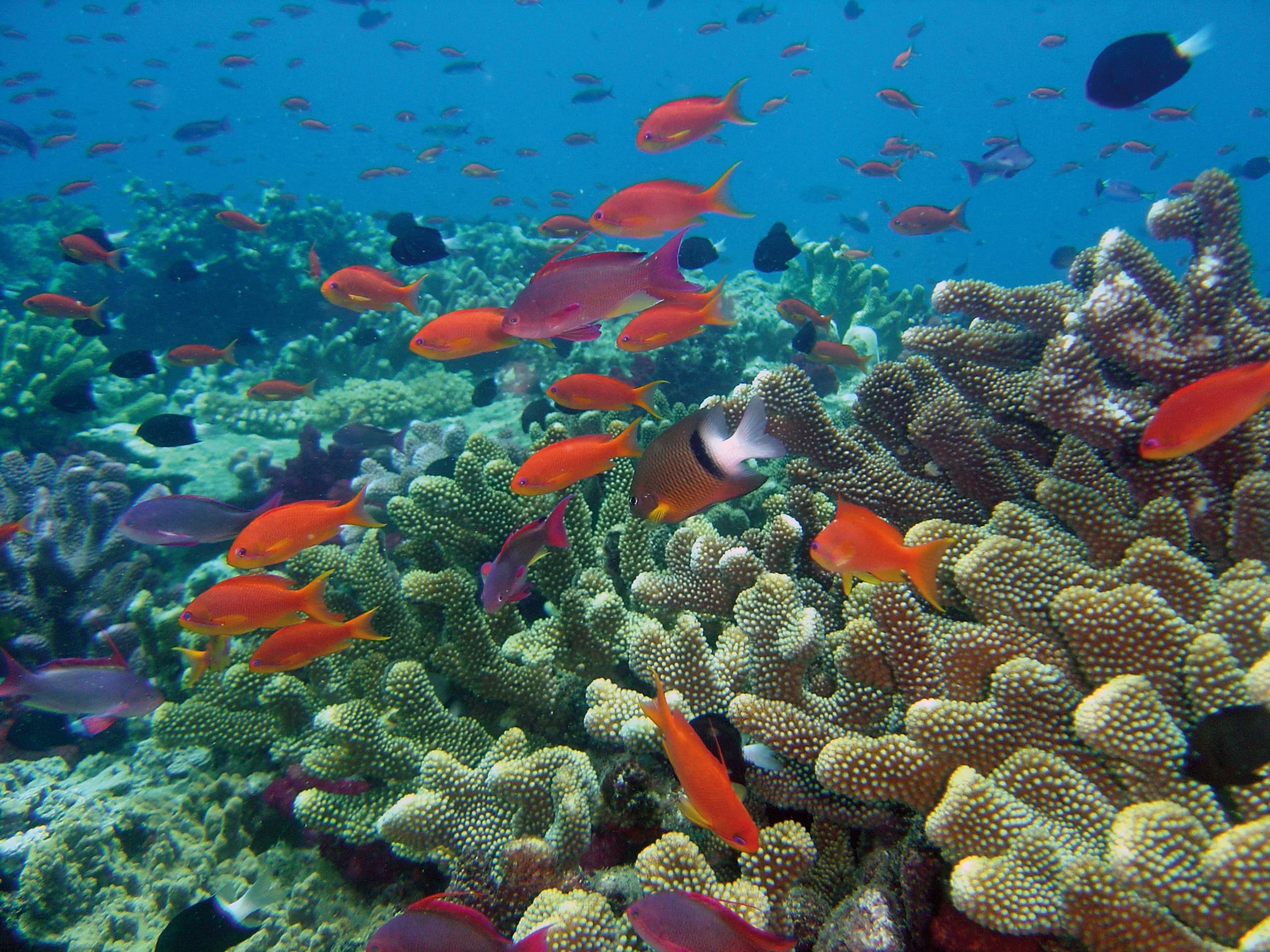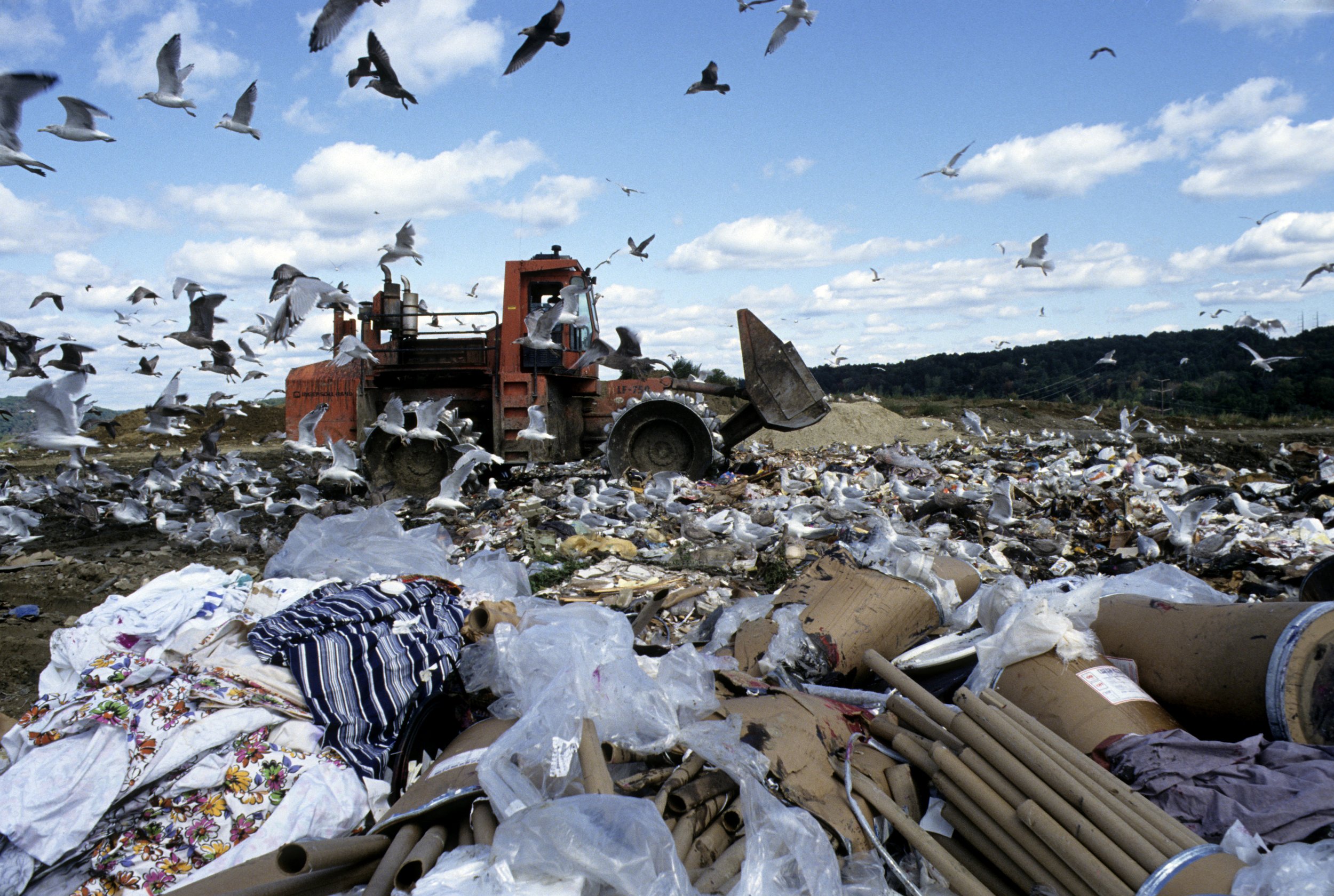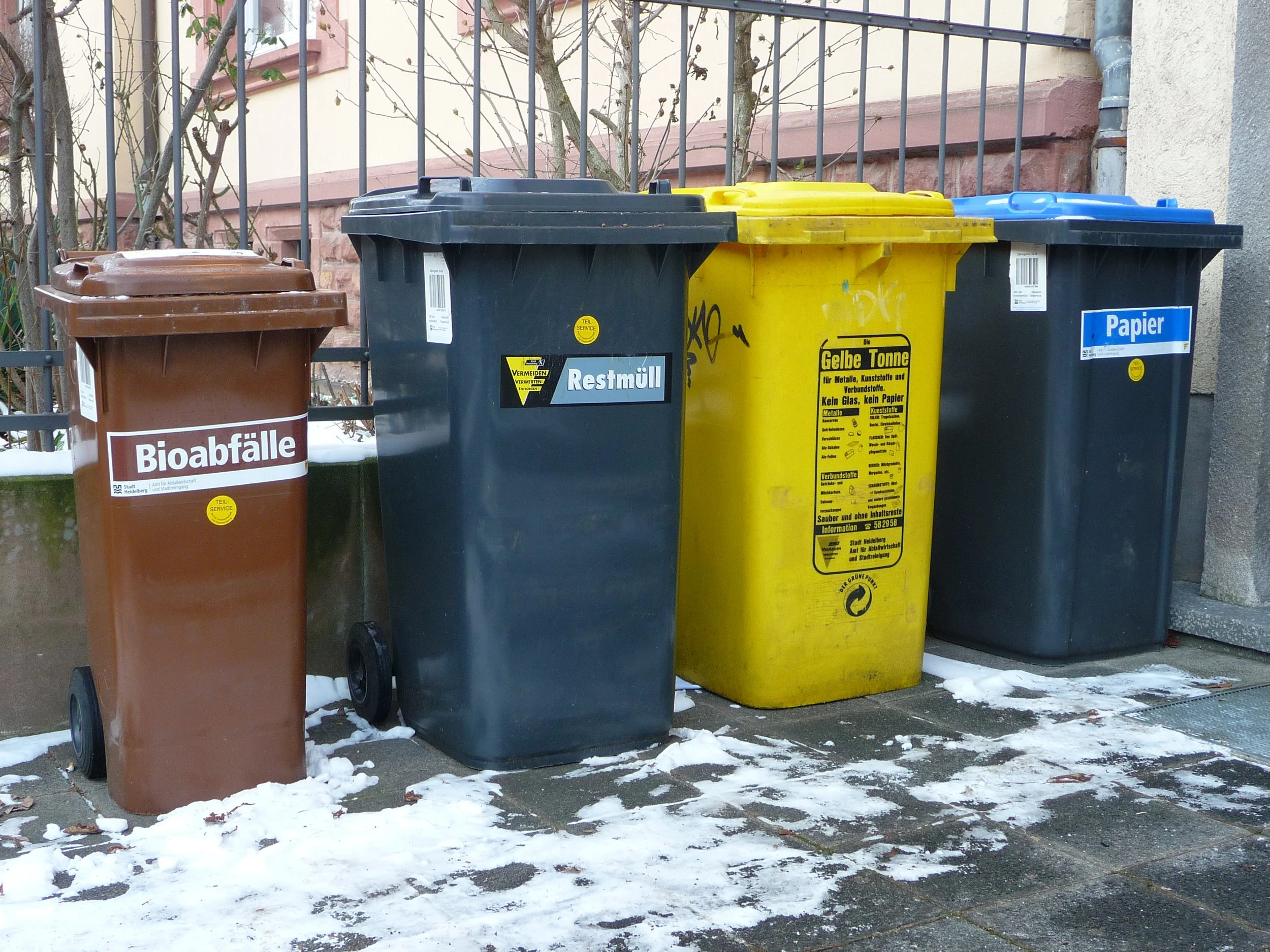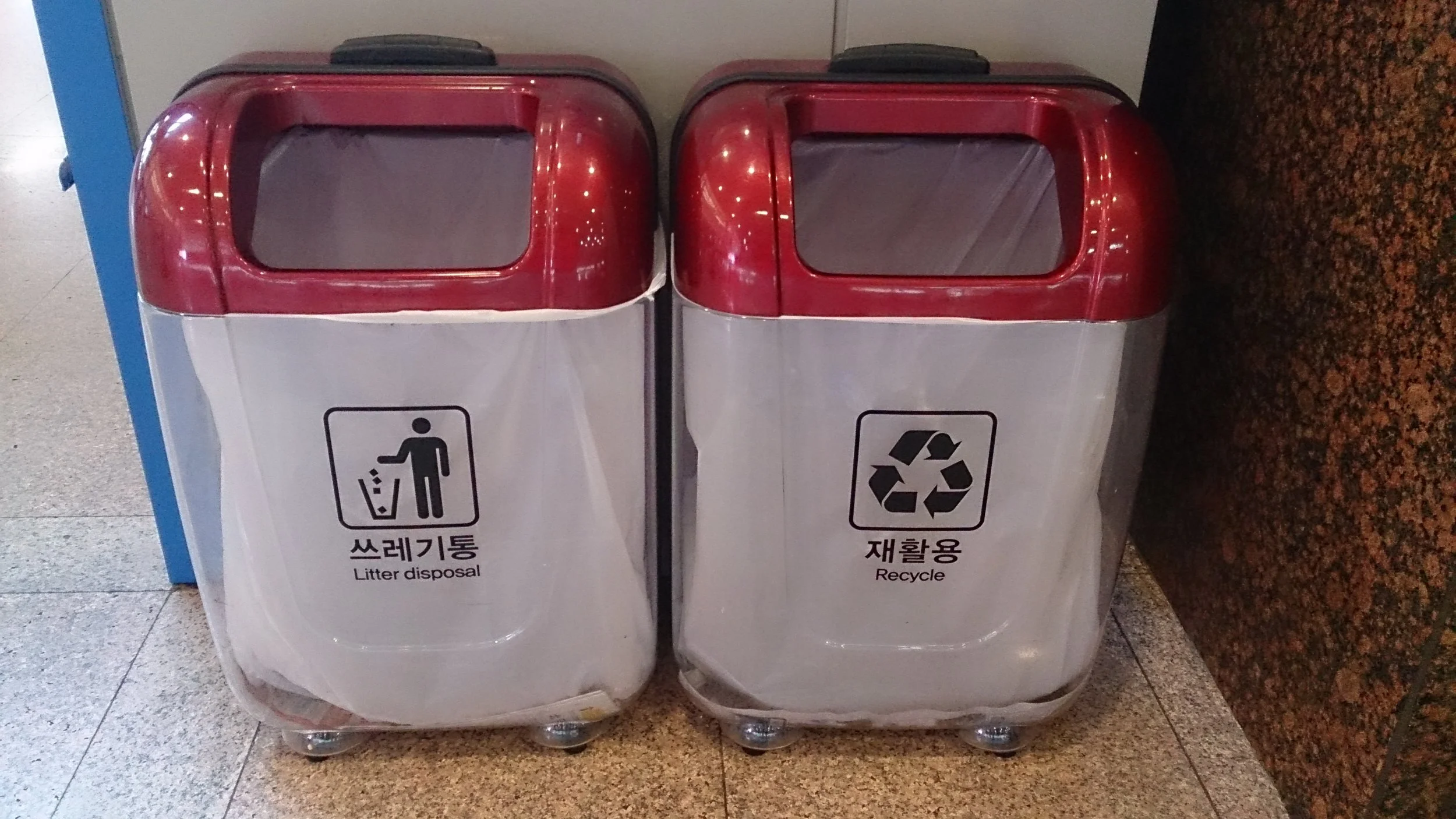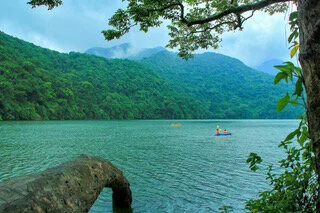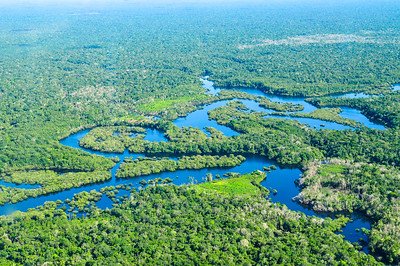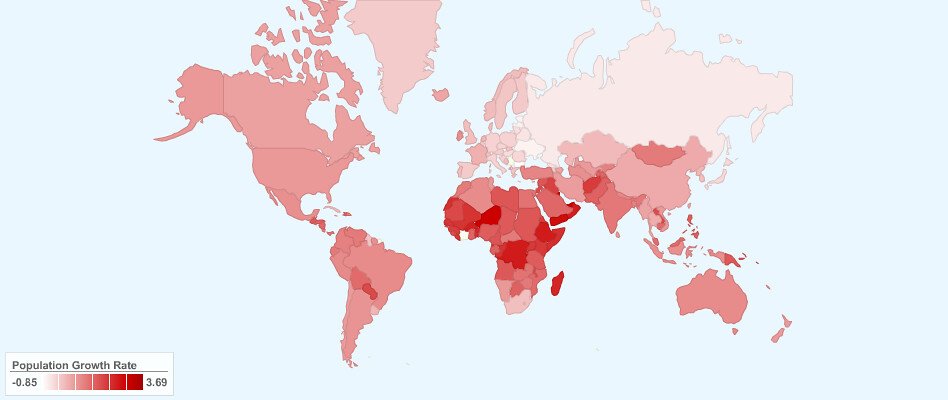With 350 million metric tons of plastic waste flooding the planet every year, fungus and other microorganisms could be a surprising solution.
Read MoreRural Roots, Green Future: Forest Conservation in Romania
With the loss of centuries-old trees, Romania looks to the preservation of its ecosystem to protect both past and future.
Read More8 Ways to Surf Sustainably
Dive into the world of sustainable surfing and learn how to ride the waves without harming our oceans.
Read MoreGuatemala’s ‘Forest Guardians’ Save their Homeland, Providing a Conservation Model for the World
Indigenous guardians in Guatemala's Maya Biosphere Reserve combat deforestation, protecting biodiversity and cultural heritage.
Read MoreThe Ethics of Kelp Farming in Alaska
From food, medicine, climate mitigation and preserving Indigenous traditions, kelp is the shape shifting superhero a polluted world needs.
Kelp with sardines. National Ocean Service. CC By 2.0.
Ethereal and elusive, an unconventional forest grows in the ocean—not full of trees, but of kelp. These captivating, yet occasionally uninviting, greenish tendrils are classified as a type of brown algae that grow as coastal seaweeds; they are typically found in colder waters. In a way, the ethereal kelp borders on the mystical and magical. Kelp is a shapeshifter; a veritable phenomenon that can morph into a variety of forms. Kelp can be used as biofuel, an eco-friendly alternative to fossil fuels derived from renewable biological materials. This multi-talented algae can also be used to make utensils, soap and clothing as well as food—all manner of products people use in their daily lives.
Beyond biofuel, food and everyday household items, the production and usage of kelp is a key debate amongst climate scientists and environmentalists alike. Farming kelp could be a solution in mitigating negative effects of climate change; it could also bolster coastal locations’ economies and positively affect the livelihoods of communities living in and around these shores. But, on the other hand, farming kelp is also fraught with bureaucratic convolutions and, in the long run, could potentially backfire and end up re-polluting oceans. In short, the implications of kelp farming are complex; they are enigmatic and double-edged, much like the kelp itself.
Alaskan Company Barnacle Foods’ Kelp Products. Josephine S. CC By 2.0.
The Eyak People of Alaska—and particularly one Dune Lankard—understand kelp farming. Lankard is the co-founder of The Eyak Preservation Council as well as the President and Founder of Native Conservancy, both of which are groups that support Alaska Native peoples’ efforts in preserving and conserving land and biodiversity on the Alaskan Coastline. People in Alaska and beyond have begun to farm kelp because of commercial, food security and climate change mitigation possibilities. And, because of its optimal climatic conditions, Alaska has become a hotspot for kelp farming.
But why is kelp—this mysterious, gangly sept of seaweed—so valuable and beneficial for the environment? For humans consuming kelp, the benefits lie within its nutritional content: kelp contains calcium, magnesium, iron, vitamin C and potassium. But, perhaps more importantly, people like Dune Lankard and fellow Alaskan kelp farmers are more concerned with kelp’s ability to mitigate climate change. Kelp’s primary ability to mitigate climate change comes from its ability to sequester carbon dioxide. You may have heard of carbon dioxide because it is a greenhouse gas. But, what you might not know, is that carbon dioxide from the atmosphere can also enter the ocean, resulting in a mechanism called ocean acidification.
pH reference scale — Ocean Acidification lowers pH. Heinrich-Böll-Stiftung. CC by 2.0.
As more carbon dioxide enters the ocean and gets absorbed, the pH of the ocean itself decreases, meaning the ocean becomes more acidic. But, this is where Kelp the superhero rushes in and saves the marine phyla. Kelp require carbon to grow because of photosynthesis—they absorb sunlight as well as carbon dioxide to produce the sugar and oxygen they need to live—and, through their uptake of carbon, they leave oceans less acidic and marine organisms more happy. Additionally, when kelp float out to sea and die, sinking deep beneath the surface of the water, their carbon sinks into the depths along with them.
Perhaps it makes sense that kelp, with its bewitching appearance, could be responsible for such intricate—almost magical—climate processes. While there are over 500 species of seaweed in Alaska, the three most-commonly grown species are bull kelp, sugar kelp and ribbon kelp. Bull kelp is strong, almost proud-looking—its thick stalk beholds a sense of authority in the water. Sugar kelp, on the other hand, is more delicately enchanting—its slightly-curled, yellow blades are like rays of sunlight spattering the sea. Ribbon kelp, with its thick spine and greenish appearance, are more reminiscent of a looming forest, or the shifting of willows in the wind.
Bull kelp bulb. James St. John. CC By 2.0.
These kelp, however, represent more than just their life cycle, climate mitigation abilities and appearance. Historically, the Eyak people—located on the Copper River Delta near Cordova, Alaska—have long used kelp for food, medicine and even tools. But, through colonialism and imperialism, some of these traditions were disrupted over decades. Today, however, the Eyak and other Indigenous peoples’ kelp farming has allowed them to reclaim these traditions. Additionally, there are immense economic benefits for any employees involved in kelp farming. The fall-to-spring growth cycle of kelp, as well as the need for regular visitation and observation of kelp farms, offer both seasonal and year-round employment opportunities. The increasing amount of kelp farms subsequently increases the number of job opportunities in Alaska, bolstering the state’s economy. Although mariculture in Alaska is currently a $1.5 million dollar industry, newly awarded $45 million in grants could potentially grow it to more than $1.85 billion in 10 years.
Kelp farming and consumption, however, is not all sunshine and rainbows. One of the most difficult aspects of kelp farming is getting started in the first place—a kelp farm requires a permit. Most states require multi-step permit application through boards of aquaculture as well as departments of fish, wildlife and game. Luckily, on average Alaska has a lower permit processing time than most states. Beyond the bureaucratic complexities of even getting started, there are also questions being raised by environmental and climate scientists about the future of kelp farming. Although—as is outlined above—kelp farming is believed to help ocean acidification through carbon sequestration, some scientists are questioning the ability for kelp to continue to sequester carbon as ocean temperatures warm as a result of climate change.
While people should be mindful of the ambiguous future of kelp farming, for now it is safe to say that the more immediate outcomes of farming are helping kelp maintain a positive reputation. Kelp—delicate and mysteriously distant—is, in actuality, an aid toward a variety of more tangible, positive outcomes. Kelp is food. Kelp is medicine. Kelp can even represent community and prosperity. Of course, kelp can also be a huge factor in sequestering carbon in a post-industrial society. But, for many people, these scientific processes can feel overwhelming or unimportant simply because they seem intangible. This is why the effects of kelp that people can really see and feel—the sense of community, the positive economic impacts and the reclamation of tradition—are something to celebrate. Despite its unconventionality and elusivity, kelp can be a superhero.
Carina Cole
Carina Cole is a Media Studies student with a Correlate in Creative Writing at Vassar College. She is an avid journalist and occasional flash fiction writer. Her passion for writing overlaps with environmentalism, feminism, social justice, and a desire to travel beyond the United States. When she’s not writing, you can find her meticulously curating playlists or picking up a paintbrush.
Will the Paris Olympics Be the Green Games?
In preparation for the Olympic Games, Paris invests in sustainable resources to minimize environmental impact.
Paris Olympic Games. Nicolas Michaud. CC BY 2.0
Keeping up the momentum of its previous environmental ambitions, Paris has committed to complete environmental sustainability for the 2024 Olympic Games. This greener approach will be made possible through careful consideration of the event’s chosen venues, operations (catering and accommodation) and transportation.
As a city renowned for its architecture, Paris has addressed one major change that it can make to the games — using existing infrastructure to host events. As of now, 95% of the chosen venues are pre-existing or temporary structures.
The competition zones are divided into two main areas both inside and outside of Paris’ center. Universally connected by the Seine, 80% of the venues are within a 10 kilometer distance of the Olympic and Paralympic Zones, allowing 85% of athletes to stay less than 30 minutes away from their venue. Through the use of existing facilities that require minimal transportation, Paris can host an event that will aid in its goal to, hopefully, halve a previous carbon footprint of 3.86 million tons. The French aim for a decrease in emissions compared to that of the Tokyo Games in 2020. With Tokyo’s post-game estimation of 2.16 million tons of carbon dioxide, Paris has committed to a limit of 1.65 million tons and to offset any indirect impact with climate-positive projects. Meeting carbon emission goals for the games may prove challenging because of these indirect impacts, primarily the substantial travel emissions generated by spectators. This seems a daunting task when compared to the Tokyo games which managed to achieve low net emissions because of the lack of spectators due to the COVID-19 pandemic.
In accordance with the city’s holistic sustainability vision, Paris has placed emphasis on the importance of green catering. As an event that is responsible for serving 13 million meals, embracing sustainable food sources and partnerships now will set the city up for environmental prosperity even after the games.
In recognizing the environmental impact of certain food sources and resulting waste, Paris has quantified its objectives to reduce its carbon footprint. This eco-conscious catering approach is made up of 6 commitments: two times more plant-based food, 100% certified food (food that is sourced, produced and consumed in a responsible way), reduced plastic consumption, recycling of all uneaten food, reuse of all equipment and structures and hiring 10% of workers from professional integration programs. Athletes and spectators will have a wide variety of plant-based options at their disposal, with 60% of food and beverages available to spectators being vegetarian. With 80% of the total food supply being sourced from within France’s borders, the alternatives to traditional cuisine should hardly be noticed as food will be prepared by culinary professionals who are familiar with creating meals that make the best use of the seasonal menu. Expertise from the chefs and localized sourcing will leave little room for waste across both food and its packing. In its drive to cut down on single-use plastic, Paris’ catering teams will exercise the use of plastic alternatives and employ a “reducing, reusing, replacing and recycling” concept on drink and food containers.
Paris’ goal to minimize waste generation and increase localized food sourcing encourages a healthier lifestyle that will extend beyond the games and become a beacon for environmental change. Even during the 2016 Olympic Games in Rio de Janeiro, plastic in the Guanabara Bay made it difficult for sailing teams to compete. This problem only intensified after the games when produced waste registered at over 18,500 tons, most being non-renewables. Despite this, some of the food waste after those games was utilized by an Italian chef, who created meals for the homeless.
The Paris Olympics will not focus only on breaking athletic records, but on breaking new ground for environmental action, particularly in sustainable event management. Through reliance on a well-developed, effective public transit system and localizing operations within France to minimize travel distance, Paris is showcasing a dedication to environmental impact that will extend beyond the games. If successful, this will serve as an inspiring example for how a large-scale international event can align with sustainability goals to change not just experiences, but lifestyles.
Mira White
Mira is a student at Brown University studying international and public affairs. Passionate about travel and language learning, she is eager to visit each continent to better understand the world and the people across it. In her free time she perfects her French, hoping to someday live in France working as a freelance journalist or in international affairs.
The Dark Side of H&M's Fast Fashion Empire
As the fashion industry grapples with its environmental impact, the fast fashion brand H&M comes under scrutiny for its pollution and hazardous labor conditions.
A landfill in Russia. Wikipedia commons. CC BY-SA 4.0
Have you ever fallen in love with a dress, imagining it would exude the same style and allure as it does on a model or your favorite celebrity, only for it to be worn just once or twice before being forgotten in the depths of your closet? Many of us can relate to this experience. Interestingly, today’s average person buys 60 percent more clothing items than they did 15 years ago, but keeps them for only half as long as they used to. Waste in the fashion industry has many causes, but is often associated with fast fashion, a business strategy in which companies quickly turn around cheap imitations of high status garments to cash in on transient fads.
In the realm of fashion, vanity can lead to excessive consumption and an alarming amount of waste. Although individual choices play a role in this, it is crucial to recognize that fashion behemoths, including renowned names like H&M, Zara, and UNIQLO, often promote fast fashion trends while glossing over environmental costs to maximize profits.
The dawn of fast fashion can be pinpointed to the rapid evolution of supply chain management in the industry. Gone were the days of traditional craftsmanship, where each individual garment was lovingly designed either at home or within small workshops. Thanks to the fashion supply chain, designers could now disseminate their original creations through an intricate network of textile sourcing companies, manufacturing facilities, distribution channels, retail stores and warehousing centers. The 1960s witnessed a surge in young people embracing affordable clothing, shunning the age-old notion of sartorial grandeur. In response to this cultural shift, retailers began introducing trendy and pocket-friendly attire, consistently refreshing their offerings through the 1990s. While this innovative approach bolstered brand visibility and efficiency, it also gave rise to a notable drawback: excessive waste. Take the production of shirts and shoes, for instance; over the past five decades, production has doubled, yet three out of four of these items end up either incinerated or in landfills.
H&M at Belfast. William Murphy. CC BY-SA 2.0.
The 1990s were a turning point for brands like H&M. Originally established in 1947 by Swedish businessman Erling Persson under the name “Hennes,” the company later acquired Mauritz Widforss in 1968, a Swedish hunting and fishing store, leading to the more succinct and memorable name of H&M that we know today. Rapidly expanding across Europe, the company set its sights on global outreach by the 1980s. H&M made its first foray outside Europe with a store on New York’s 5th Avenue, positioning itself alongside myriad other fast fashion brands. Catering to a diverse consumer base, including women, men, teenagers and children, it offers an extensive range of products, from sportswear and underwear to shoes, accessories and cosmetics, all at affordable prices. With a presence in over 4,000 stores worldwide and a workforce of over 100,000 people, H&M stands as the eighth most valuable apparel brand in the world as of 2022, only trailing behind giants like Nike, ZARA, and Adidas.
However, behind H&M’s tale of success lies a daunting environmental cost. The brand’s significant contribution to waste and pollution is a matter of public concern. In 2019 alone, H&M churned out a staggering 3 billion garments, making it one of the foremost polluters in the fashion industry. The use of cheap and toxic textile dyes, coupled with the fabrics themselves, is contributing to the global warming crisis. Polyester, an artificial textile that constitutes roughly 60% of the global fiber market in 2020, is derived from fossil fuels and sheds microfibers that exacerbate the proliferation of plastic in our oceans. Although H&M promotes its use of recycled polyester, made from oil-based waste like old PET bottles or pre-existing polyester clothing, studies reveal that the recycling process is energy-intensive, and tracing the origin of recycled polyester is challenging. Surprisingly, of all the materials used by H&M, a mere 23% are recycled, even though the brand touts that 84% of its products are sourced from recycled or sustainable materials, and the criteria for a “sustainable material” remains elusive. Even H&M's acclaimed Conscious Collection, which is marketed as sustainable and has seen brisk sales, contains only a fraction of recycled materials. All of these concerns are artfully obscured by the ambiguous language of H&M’s sustainability report.
Protest against Fast Fashion. Stefan Muller. CC-BY 2.0
While acknowledging the importance of gradual change, H&M's approach to sustainability is unacceptable due to the company’s engagement in greenwashing — a disconcerting technique whereby companies overstate their actual sustainability accomplishments to divert criticism from harmful practices. A study conducted by The Changing Markets Foundation, an organization dedicated to propelling and amplifying solutions for sustainability challenges through market influence, revealed that a startling 96% of the claims in H&M's sustainability report were “unsubstantiated” and “misleading” as per guidelines. Despite the vagueness in its official report, H&M invests diligently in presenting a clear and positive image of its sustainability initiatives through vigorous social media and marketing campaigns. An example of this involves the brand’s strategic partnerships with celebrities. For instance, H&M collaborated with the former Game of Thrones actress Maisie Williams, whom the company lauded as a symbol for her generation and an influential advocate for female empowerment, sustainability and diversity. In 2020, H&M introduced “The Loop Machine,” a recycling program aimed at transforming old H&M garments into new clothing items. However, access to this program remains limited worldwide and is burdened by lengthy processing times, with hours required to recycle a single item.
Beyond its environmental impact, H&M’s massive production business model has led to serious ethical concerns, particularly regarding labor conditions. While H&M has taken some steps towards recognizing the importance of decent, meaningful jobs with fair compensation, benefits, and safe working environments free from discrimination and with the right to freedom of association, statistics paint a grim picture. During the pandemic, a staggering 89 percent of H&M workers received wages below the international poverty line. In June 2023, just a month earlier, over 4,000 Spanish employees from H&M's brands, including Other Stories and Cos, took to the streets, demanding pay raises in line with the rising cost of living and protesting increased workloads resulting from layoffs during the COVID-19 pandemic. Workers at factories producing for H&M and Best Seller also reported witnessing explosions and exposure to electrical discharge and harmful substances.
H&M Global map in 2015.Barthateslisa. CC BY-SA 4.0.
While it is true that H&M has made progress — evident in its 2022 report with highlights such as 17 approved projects that can potentially reduce the supply chain’s CO2e production by 50,000 tonnes and an improved Fashion Transparency Index ranking — there is still much more the company must do to be ethical and go green. The root of the issue lies in its fundamentally unsustainable fast fashion model, which prioritizes cost reduction and profit maximization above all else.
Thrift Town in California. MikeR. CC BY 2.0.
On the other hand, the resale and rental industries are rising as more sustainable alternatives to fast fashion. Embracing a recycle-oriented model, they eliminate the need to extract additional resources to meet our demands. Though not as widely accepted in the world of fashion, they provide compelling alternatives for those seeking a more environmentally-conscious lifestyle. For H&M and other fast fashion brands, addressing current concerns about pollution, waste, and human rights is only a partial solution on the path to sustainability. As they continue to expand globally, new challenges will inevitably arise. The true path to progress lies in an unwavering commitment to a radical transformation of the industrial model, embracing a truly sustainable approach.
TO GET INVOLVED:
Centre for Sustainable Fashion
The Centre for Sustainable Fashion (CSF) is a research institute in the University of the Arts London's London College of Fashion. Its mission is to challenge and question the status quo in the fashion industry, driving toward a system that values and respects the planet’s ecology. Embracing Fashion Design for Sustainability, the CSF pioneers innovative approaches in academia, industry and education. Learn more about CSF here.
Fashion For Good
Fashion For Good, a platform fueled by the fashion industry, spearheads sustainable fashion innovation. Its goal is to unite the entire fashion ecosystem, transforming it into a powerful force for good. Shifting away from the linear 'take-make-waste' model, Fashion For Good advocates for a circular Good Fashion strategy, one that is restorative and regenerative by design. With its Accelerator, Scaling Program and Good Fashion Fund, the organization targets technologies and business models with immense potential to revolutionize the industry. Learn more about CSF here.
Hope Zhu
Hope is a Chinese international student at Wake Forest University in North Carolina studying sociology, statistics, and journalism. She dreams of traveling around the globe as a freelance reporter while touching on a wide range of social issues from education inequality to cultural diversity. Passionate about environmental issues and learning about other cultures, she is eager to explore the globe. In her free time, she enjoys cooking Asian cuisine, reading, and theater.
5 Wildfires Around the World in 2023
The increasing temperatures and drier conditions created by climate change have caused bigger and more dangerous wildfires.
Wildfire. Rawpixel. CC0 1.0.
Wildfires are occurring more frequently, burning hotter and causing more destruction than ever before. In the US alone, the top five years for the largest acreage burned have occurred since 2007, with the top three all within the last eight years. Climate change causes warmer and drier atmospheric conditions, leading to more intense and longer-lasting wildfires. The years with the most burned acreage tend to also be the years of the warmest temperatures on record, suggesting the role of climate change-induced aridity in the intensity of these natural disasters. Here are examples of wildfires that have occurred in 2023 so far.
Chile - February 2023
Wildfire smoke in Chile. Lacasadeljotta. CC BY-SA 4.0.
Wildfires in south-central Chile led to 24 deaths and about two thousand injuries, burning over 800,000 acres of land. These fires arose from a phenomenon referred to as “La Nina,” which explains the occasional cooling of ocean temperatures, leading to rainier and colder conditions in the north as well as drier and warmer conditions in southern regions, such as Chile.
Spain - March 2023
Wildfire in Spain. Sergio Torres. CC BY-SA 4.0.
Fires originating in the province of Castellón marked the beginning of this year’s wildfire season for Spain. Forcing over 1,800 people to evacuate, the blaze spanned over 10,500 acres of land. Though these fires were destructive, the country experienced even more devastation last year, with about 500 wildfires and the burning of about 756,000 acres of land.
Russia - May 2023
Wildfire damage in Russia. Ivan Simochkin. CC BY-SA 3.0.
Wildfires in the Russian Ural Mountains and Siberia have led to at least 21 deaths and many injuries. These inferno covered 280,000 acres of land, destroying hundreds of homes. The cause of these fires was a heat wave likely caused by climate change, and the degree of destruction has been attributed to lack of resources and in and the sheer isolation of in the locations of these fires’ origins.
United States - June 2023
Smoke from California wildfires. Frank Schulenburg. CC BY-SA 4.0.
Like Spain, the United States experienced a brutal wildfire season in 2022, especially in western states. For example, fires in the state of Oregon burned over 400,000 acres of land in 2022 alone. So far in 2023, Oregon has experienced 18 wildfires and the burning of over 17,000 acres of land. Other US states, such as Arizona and California, have also had multiple wildfires recently.
Canada - June 2023
Forest fire in Canada. Stefan Doerr. CC BY-ND 3.0.
The Canadian province of British Columbia experienced its worst wildfire on record this June. The fire occurred in Donnie Creek, burning 2,063 square miles of land. The summer of 2023 is projected to be the worst wildfire season ever for Canada in terms of damage, as the country experiences warmer and drier conditions than usual.
In recent years, the most wildfire damage has occurred in the month of July, with an average of 1.7 million acres burned in this month between 2002 and 2020. With this statistic, it can be inferred that there will be even more destruction to come from wildfires in 2023. More than 80 percent of wildfires are caused by humans, often through cigarettes, campfires, and other common products and activities. Fires are becoming deadlier due to atmospheric conditions resulting from climate change, as drier and warmer temperatures make the environment more flammable and induce larger fires. Indeed, the wildfires in Chile, Spain, and Oregon were likely caused by human activity. With this information, it is important to spread awareness about wildfires and to be cognizant of possible environmentally-harmful behaviors.
Here are some ways you can help prevent wildfires:
Ensure that you properly extinguish your camp fire.
Douse your camp fire with a bucket of water twice, stirring it in between. Before leaving, check to make sure the ground is cold.
Avoid engaging in fire-related activities during dry conditions
Dry atmospheric conditions increase flammability. Avoid building fires, using fireworks, or engaging in any other fire-related activities on dry days.
Avoid driving or parking on dry grass.
The exhaust of one vehicle alone can exceed one thousand degrees. As dry grass is highly flammable, it is best to not park or drive in these areas.
Put used matches in a cup of water or closed container.
Ensure that you are being conscious of how you dispose of your matches to avoid accidentally igniting them. Put used matches in a cup of water or a closed container (to starve any embers of oxygen) before disposing of them.
Another way of making an impact is to donate to wildfire relief organizations. Many organizations help revitalize areas that have been devastated by wildfires.
Click here to donate to the American Red Cross Disaster Relief .
Click here to donate to the UN Crisis Relief.
Alexandra Copeland
Alexandra is a student at The College of New Jersey studying psychology and journalism. She is a lover of coffee, dancing, and visiting new places. Being raised with her Greek culture has inspired her interest in cultural customs around the world. She is a passionate writer and hopes that her work will make an impact in the future.
4 Stunning Coral Reefs: Their Threats and Beauty
Coral reef systems are home to some of the largest concentrations of biodiversity in the world, but climate change is putting them at risk.
Fish swimming through coral reefs in Panama. Thinkpanama. CC BY-NC 2.0
Home to countless fish and vibrant aquaflora, these awe-inspiring reefs are feeling the impacts of climate change.
To dive into the world of coral reefs is to experience an underwater garden defined by vibrant colors, rare plant life, and unparalleled biodiversity. Not only are coral reefs visually stunning and awe-inspiring, but they serve an important role in food systems and economic growth, as approximately one billion people rely on coral reefs across their world for food and income.
However, the effects of climate change are damaging the health and vitality of reef systems. One major effect of rising water temperatures on coral reefs is coral bleaching. Coral bleaching occurs as an adaptive response to warming waters, during which corals shed their symbiotic algae, or zooxanthellae, in the hopes of replacing it with algae that is more heat tolerant, a process that leads the corals to take on a white color and appear ‘bleached.’ This doesn’t immediately kill the coral, but the environmental keystone is left vulnerable and its death rate increases. With so many species relying on reefs as a source of nutrients and shelter, bleaching not only affects the health of the coral itself but the entire network of life that the reefs support.
The impacts of coral bleaching are increasing steadily alongside rising temperatures, with an ocean heat wave causing roughly 75% of the world’s reefs to experience bleaching between 2014 and 2017.
As reefs around the world feel the effects of climate change, now more than ever is it crucial to understand and appreciate the beauty and significance of coral reef systems around the world, as well as the efforts being made to protect them.
Great Barrier Reef, Australia
The Agincourt Reef in the Great Barrier Reef. Robert Linsdell. CC BY 2.0
Perhaps the most famous of all coral reefs, the Great Barrier Reef is also the largest coral reef system in the world, stretching some 348,000 square kilometers along the Australian coast. Home to distinct ecology and biodiversity, the reef holds roughly 400 distinct types of coral, 1,500 different species of fish, and around 240 different species of birds. The Great Barrier Reef is one of the most popular tourism destinations in Australia, with some 2 million people visiting the Marine Park each year.
Around 344,400 square kilometers or about 99% of the reef is included as part of the Great Barrier Reef Marine Park. As part of The Reef 2050 Long-Term Sustainability Plan, the Australian government invested $260 million into the park in an effort to aid reef protection and conservation efforts. The Great Barrier Reef Marine Park Authority has also taken strides to acknowledge Indigenous communities’ relationships to the reef and reserves specific marine tourism permits that offer opportunities for Indigenous people to build tourism businesses and collaborate with other operators to share their cultural connection with the reefs.
In 1981, the Great Barrier Reef became a World Heritage Site, an area that is granted legal protection by the United Nations Education, Scientific and Cultural Organization (UNESCO), making it the most biodiverse ecological area to be included in the category.
Despite such protections, the Great Barrier Reef is vulnerable to harmful bleaching practices, with nearly 400,000 hectares disappearing due to bleaching between 2015 and 2016 alone. As outlined in The Reef 2050 Plan, the Australian Government aims to reduce the nutrients loads entering the ocean via rivers by 80% by 2025.
The Great Barrier Reef is one of the most popular diving destinations, and offers travelers the experience to glimpse a range of marine life, from whitetip sharks to yellow snappers. The town of Cairns is a popular entry point and has a bustling hostel season in peak diving season during which day boats take divers out to nearby reefs. If travelers want to escape the crowds they can venture farther north to Port Douglas and utilize the town's diving resort options. Because the quality of reefs increases as one moves further from the mainland, divers frequently utilize liveaboard trips, which allow them to spend multiple days and nights living on a boat that transports them to different diving sites. While diving is possible year-round, Australia’s summer months between December and February bring in warmer and clearer water to talk in the stunning vibrancy of the corals. However, during the winter months from March to November (the Southern Hemisphere’s de facto summer), divers are more likely to come across large marine mammals. The Great Barrier Reef is suitable for divers at all levels, though degrees of difficulty vary depending on the site, with spots such as the Osprey and Ribbon Reef being more suitable for advanced divers.
Raja Ampat, Indonesia
Colorful corals and fish at the Raja Ampat. Carlos Fernandez-Cid. CC BY 2.0
As part of The Coral Triangle, an oceanic ecological area in Southeast Asia and the Pacific, the Raja Ampat reef stretches nearly 4 million square miles. The rich nutrients and biodiversity of this area makes it home to 1,600 different fish species and 75% of the world’s coral species. The diversity in the area in part stems from the area's proximity to the “Ring of Fire”, a range of underwater volcanoes that extends for some 25,000 miles along the Pacific Ocean. Stretching along the boundaries of several tectonic plates, the area is rich in volcanic activity, and holds 75% of the Earth’s volcanoes, of which it has more than 450.
Parts of the Raja Ampat are included in the network of Marine Protected Areas that was established by local communities and governments along with Conservation International, The Nature Conservancy, and Worldwide Fund For Nature, to provide conservation and zone regulations to a total of 2,000,109 hectares.
The Raja Ampat has proven widely resilient to the effect of climate change and warming waters. The reef’s unique location has rendered it adaptable to a variety of different climates, with low tide reefs heated by the sun and deep ocean reefs that experience oceanographic upwellings which bring in cold, nutrient rich water. Temperatures across The Raja Ampart can range between 66 degrees to 96 degrees Fahrenheit. Because coral bleaching is a stress response to climate change, The Raja Ampat reefs resilience to intense warm water temperatures also means that the reef system has exhibited few signs of bleaching.
Due to its remote locale, the Raja Ampat is less popular with divers than some of the other major reef systems. But those who choose to embark on the journey will not be disappointed. Liveaboarding is the most popular way to see the reefs, with around 40 liveaboards in the area, and trips are on offer from October to May. Dive resorts are also popular for visitors who want a land-based option. Some of the most popular diving spots include Sardine's Reef, Mike's Point and Blue Magic, located at the Dampier Strait. Along with its coral, the Raja Ampat contains a plethora of rich marine life including reef sharks, barracudas, and octopuses. With such diversity, it's no wonder the Raja Ampat reef holds the record for the largest number of different species recorded in a single dive.
Red Sea Coral Reefs, Indian Ocean
Divers in the Red Sea near Big Brother Island. Derek Keats. CC BY 2.0
The Red Sea Coral Reefs are defined by their distinct location and geological history. The reef platforms are over 5,000 years old and extend for some 1,240 miles (2,000 km). Due to its unique location and regional climate, the Red Sea reefs are tolerant to extreme climates, including high temperatures, salinity, and frequent turbidity from seasonal dust storms. A lack of river discharge, combined with low rainfall in the region helps make the water exceptionally clear and free of heavy sediments. This unique geology makes the Red Sea Reefs an ideal home for rare species, with roughly 10% of its 1,200 recorded fish species being endemic, meaning that they are found nowhere else.
The Red Sea Coral reefs are unique in their resistance to climate change and ocean bleaching. This resistance is in part due to the fact that many of the reefs in the Red Sea actually migrated to their current location from the south, an area with significantly higher temperatures. Relying on their historical comfort with extreme heat, today, reefs in the Red Sea seem to be actively thriving as water temperatures rise, with algae doubling the amount of oxygen they produce. In order to learn more about the Red Sea reefs’ ability to thrive in such extreme weathers, scientists have built a Red Sea Stimulator to try and mimic the conditions of the area and understand how the specific environment in the Red Sea can be used to help protect other reef systems that are not as resistance to climate change.
While the Red Sea coral reefs have proven resilient to climate change, they face the threat of degradation from nearby urban expansion that can create runoff and debris harmful to the water quality. In 1994, the governments of Israel and Jordan collaborated to found the Red Sea Marine Peace Park, in the Gulf of Aqaba. The park offers a groundbreaking example of a cross-national collaboration to preserve and protect coral reefs.
Diving the Red Sea allows an opportunity not just to see the coral, but also large marine mammals such as sharks and dolphins, unique underwater environments including labyrinths and lagoons, and remnants of past shipwrecks, including the SS Thistlegorm, a British cargo steamship that sunk in 1941. Most dive resorts can be found in the coastal towns of Sharm el Sheikh and Dahab. The Red Sea’s high evaporation rates and infrequent rainfall and isolated location make it a nearly year-round diving destination. Diving in the northern region allows opportunities to explore the lagoons of El Gouna and shipwrecks found in the Straits of Gubal. In the South, the Fury Shoals is perfect for gentle drift dives, and the Zabargad and Rocky Islands house shallow reefs and black coral trees. The St. John’s Reef on the border of Sudan is one of the more isolated regions of the Red Sea. Divers can explore pristine caves and tunnels, however choppy winds between October and April can cause harsh conditions.
Rainbow Reef, Fiji
Fish swimming in Fiji’s Rainbow reef. David Burdick. CC BY-NC-ND 2.0
Located in the Somosomo Strait, a passageway that separates the Taveuni and Vanua Levu islands in Fiji, the Rainbow Reef offers a striking spectrum of colors that live up to its name. The Rainbow Reef is often called the soft coral capital of the world, and one of its most popular reefs is the Great White Wall, an underwater slope covered in a tapestry of soft white corals and home to countless colorful anthias as well as reef sharks and manta rays.
Fiji’s reefs have also been impacted by rising temperatures and bleaching. In 2017, a major bleaching event killed nearly half of Australia’s Great Barrier Reef and affected almost all of the reef’s protected by UNESCO as World Heritage Sites. As a reaction to the devastating bleaching, Fijian Prime Minister Frank Bainimarama called for greater protection of reefs as they face the triple manmade threats of ocean acidification, rising temperatures, and harmful fishing practices. In January 2018, the Fijian government banned the sale of live coral, in an effort to provide further protection of the coral systems and recognize the important role these reefs play for local Fijians who rely on them for food and economic stability.
The Rainbow Reef is a popular diving spot, with the Great White Wall being included as one of the top 10 diving destinations by U.S. Divers Magazine and there are a few different diving resorts in the area. Most diving is done through resorts as there is only one liveaboard in Fiji. One of the most popular diving spots is Annie's Bommies, located between the Taveuni and Vanua Levu islands. The ‘bommies’ refer to the three submerged coral reefs that provide the perfect passageways for divers to weave between and catch a glimpse of the schools of fish, eels, leopard sharks and the stunning hues of the opal bubble coral. The best visibility for diving along the Somosomo Strait occurs from April to October, with the winter season from July to September ushering in choppier water conditions.
Jessica Blatt
Jessica graduated from Barnard College with a degree in English. Along with journalism, she is passionate about creative writing and storytelling that inspires readers to engage with the world around them. She hopes to share her love for travel and learning about new cultures through her work.
How Ancient Ghanaian Culture Shapes Sea Turtle Conservation
Ghana’s ancient admiration for sea turtles has inspired a modern conservation movement to protect these ecologically vital animals.
Sea turtle swimming in the ocean. Belle Co. CC0.
Ghana is a vibrant country located in West Africa, bordered by Côte D’Ivoire, Burkina Faso and Togo. It is known for its rich culture, stunning beaches, and diverse wildlife. As a traveler, you would likely find Ghana to be a lively country, full of colorful markets, bustling streets, and a unique mix of traditional and modern cultures. Perhaps most importantly, Ghana is known for the warmth and hospitality of its people, where you’ll be met with a welcoming and friendly nature.
Ghanaian people are also very spiritually attuned, whether it’s native African spirituality or more newly introduced Christianity. They are very fond of their cultural and religious traditions, one of which is long-standing is their long standing connection to sea turtles.
Sea turtles have been a part of Ghana’s culture and folklore for centuries, with oral literature depicting these animals as protectors, helpers or even guides. Moreover, the reptiles are integral to Ghana’s ecology, as they help to maintain coral reefs and seagrass, which in turn ensure continued biodiversity.
It wasn’t always this way, as with Urbanization came poverty, and with poverty came poachers. These poachers saw the Sea turtles not as protectors but as a source of profit. Now, having returned to their traditions, Ghanaians are more determined than ever to protect and conserve these animals in hopes to prevent their extinction.
All over Ghana, there are different recorded myths and stories that show the ancient connection between Ghana and sea turtles.
The Ga and Akan ethnic groups of central Ghana have a story about their ancestors and how they once were caught in a storm while fishing, in which their boat had sunk. It is said that as the men were struggling in the choppy waters, the sea turtles arrived and helped them get back to shore.
The Dange people of eastern Ghana have a story in which their ancestors were trying to retreat after Ashanti armies had them cornered against the Volta River. They recount how both the crocodiles and the sea turtles helped them safely cross the river, by having the crocodiles form a bridge, while sea turtles helped heal the injured and guided the elderly across. It is said that to this day, both animals are fully protected in this region of Ghana.
Sea turtles in Ghana have been protected by law since 1971. Even then, there are still poachers, so just that isn’t enough. The Ghana Turtle Research Project (GTRP) has been around for more than 10 years. The organization encourages community members to participate in sea turtle conservation and to embrace their culture and traditions. By doing so they were able to get more than fifty community members to form a volunteer network. They also helped to tag and identify where turtle species reside most often in order to make sure that fishermen avoid those areas and to ensure they are safe-guarded.
Additionally, the Environmental Justice Foundation (EJF) is an organization that was focused on protecting nesting sites in the fishing communities of central Ghana. In 2019, during the first turtle nesting season (of that year), they were successfully able to deter poachers from the Goma Fetteh region.
As more and more Ghanaian communities return to their traditional and spiritual beliefs, more people are caring about the sea turtles. It’s due to the oral traditions in Ghanaian culture that these conservation efforts were possible, as they make people care more about these creatures of the sea. They helped form an everlasting connection between the sea turtle and man.
Kadija Diallo
Kadija is a student at Georgia State in Atlanta, Ga. She is a creative spirit who loves traveling and seeing new places. She also enjoys using her love for writing/storytelling to make an impact on the world. One day she hopes to make new connections and share stories as she travels to every continent.
US Lags Behind Other Nations in Recycling
Germany, Austria and South Korea recycle 20% more trash than the US. Can they lead the US to a new era of recycling?
Landfill in Danbury, Connecticut, United Nations Photo, CC BY-NC-ND 2.0.
The United States recycles 32.1% of its trash, meaning the other 67.9% of U.S. waste ends up in landfills, is incinerated, or gets lost somewhere else in the environment. Moreover, only 5 to 6 % of plastic ends up being recycled, while 85% of plastic American plastic goes to the landfills, and another 10% is incinerated. These numbers are especially concerning given that plastic is the one of the most difficult types of waste to biodegrade.
Nationally, there are few to no laws in the U.S. that mandate recycling. There have been efforts to change that. On March 5, 2021, Democratic Senator Jeff Merkley and Representative Alan Lowenthal reintroduced the Break Free from Plastic Pollution Act, a bill that would ban single use plastic bags and discourage the use of plastic utensils and straws. In addition, it would increase post consumer recycling minimums to 25% by 2025 and 80% by 2040. However, like many similar bills in the United States, it has not been passed.
While the federal government lags behind, certain states have been considerably more active in promoting recycling. Since 2022, New York has passed two important laws; one demanding that the carpet industry becomes more responsible for its waste and the other allowing consumers to fix their own electronics. California has banned certain types of produce bags, and Michigan has committed to overhauling its recycling system, striving for a 45% recycling rate, albeit without a clear deadline as to when this needs to be achieved.
With that said, even with state efforts, the US still remains far behind the world’s leaders in recycling; Germany, Austria, and South Korea. They recycle 56.1%, 53.8%, and 53.7% of their waste, respectively, each of which is over 20% more than the current US figure and around 10% more than Michigan's new recycling goal. This largely is due to enhanced recycling laws, as well as cultures and practices in those countries that incentivize and engage their populations to be environmentally conscious.
Germany
German Recycling Bins, 3268zauber, CC BY-SA 3.0
The first pillar of Germany’s recycling success is its Deposit Refund System (DRS). In Germany, when consumers purchase a bottle that can be recycled, they must pay a deposit between 0.08 and 0.25 euros. Single use plastic bottles and more environmentally harmful products tend to have a higher deposit. Once the items are returned to a retail store, the consumer will be reimbursed for their deposit. This system has proven to be incredibly successful, reaching a 98.4% return rate. In 2024, Germany plans to expand their DRS to include all milk and dairy product containers.
Germany also has a mandatory recycling system. Each household has four different recycling bins: yellow bins for lightweight packaging, green or blue bins for waste and cardboard, black or gray bins for residual and household waste, and brown bins for compostable kitchen and garden waste. If the waste is not sorted correctly, workers at the recycling plant will go through the waste and sort it manually, and the household that failed to sort the waste will be fined.
Austria
Plastic Bags Package, zeevveez, CC BY 2.0.
Three major policies contribute to Austria’s high recycling rate. First, like Germany, Austria has a rigorous recycling sorting system. Second is the country’s blanket landfill ban. This policy instructs that any item with a total organic carbon emission rate of more than 5% is banned from going into landfills, meaning that the most harmful products have to be recycled. Finally, in 2020, Austria prohibited the use of plastic bags, completely removing one of the longest lasting products in landfills, with a decomposition time of 200-500 years.
South Korea
Recycling bin in South Korea, ProjectManhattan, CC BY-SA 3.0
South Korea’s “pay-as-you-throw” recycling system requires consumers to buy specialized food waste bags, costing about 20 cents. The profits from the food waste bags goes straight back into the recycling market, greatly minimizing the cost of recycling to the government. When these bags are full, consumers leave the bag in a special bin. These bags are then picked up and composted, leading South Koreans to recycle almost 100% of their food waste.
In 2022 Keppel, a Singapore-based company, spent about 600 million dollars to buy EMK Co, South Korea’s biggest waste management and recycling company. Keppel expects the value of their investment in EMK to almost double in five years. South Korea has created a system in which private companies are able to make a profit buying and selling waste, greatly increasing the percentage of their waste being recycled.
It's important to recognize that while all these systems are successful in their own countries, the cultural, political, and economic environment in the US is very different from that of Germany, Austria or South Korea. Additionally, the US has a population about four times the size of Germany, the biggest of the three countries, meaning any recycling measures are much more difficult to implement. Yet, with the US lagging so far behind the world leaders in recycling, it would be foolish to not at least consider the solutions that have worked so well for these other countries.
GET INVOLVED
Keep America Beautiful was founded in 1953. Since then, they have created many different recycling programs, including recently a Cigarette Litter Prevention Program. Within a ten year period, they earned their communities over a billion dollars in economic value, have planted millions of plants, flowers, and bulbs, cleaned over 500 kilometers of roads, and collected over 750 million pounds of litter. You can donate to Keep America here.
Ample Harvest Inc. was founded in 2009 by Gary Oppenheimer as a way to reduce food waste by having gardeners donate their surplus food. Beyond this, they have created an Emergency Food Assistance Program to help food insecure families. Currently, they are working with over 62 million gardeners, spread over all 50 states, allowing them to generate billions of pounds of food they donate to over 8,000 different charities. This has given 4,200 different communities a sustainable food supply free of charge and, in 2020 alone, saved 1.6 million pounds of produce from being discarded. You can donate money to Ample Harvest Inc. here and give your excess food produce to your local food pantry here.
The Container Recycling Institute functions much like a Think Tank, researching recycling so they can provide recycling options and insights to local communities and governments. With a perfect 100% score for Finance and Accountability on Charity Navigator, The Container Recycling Institute, since its founding in 1991, has grown into an incredibly trustworthy Institution. As a leading recycling resource, they helped expand the Connecticut recycling Bottle Bill, the largest expansion of this kind in 10 years. In California, they helped raise the annual consumer recycling budget to over 100 million dollars. You can donate to The Container Recycling Institute here and become a member here.
Jeremy Giles
Jeremy is a Writing Seminars and International Studies major at Johns Hopkins University. He is an avid writer and the Co-Founder of Writers’ Warehouse, Johns Hopkins’ first creative writing group. He is an advocate for Indigenous rights, and studies how Indigenous philosophies can be used to help prevent climate change. Using his writing, he hopes to bring attention to underrepresented voices in today’s world.
7 Sustainable Ways To Travel Green
If you are reading CATALYST you probably have a passion for travel. Here are some ways to make your journeys as sustainable as possible.
White bus on the road. Oleksandr Pidvalnyi. CC BY 2.0.
Traveling around the globe alone or with a few friends can do wonders for your inner peace. It’s self-care at its finest. Seeing new places, meeting interesting people, and experiencing a novel culture can give you a broader perspective on life. And let’s not forget all the memories you’ll fondly look back on years from now.
However, despite all the positive effects of travel, one thing that might not cross your mind is how everything we do while globetrotting deeply affects the environment.
As travelers, we often forget that we have a responsibility to travel with care, not only for ourselves and the people around us but also for the places we visit.
Remember, we humans are the ones depleting Earth’s natural resources. So whenever you’re going somewhere, do your best to practice sustainable travel.
Here are some ways to travel green:
1. Choose Off-The-Beaten-Path Locations
Woman walking on a path in the forest. Erik Mclean. CC BY 2.0.
Right now, one of the biggest threats that the travel industry faces is over-tourism. In fact, according to the World Economic Forum, about 80% of travelers visit the same five to ten locations in each country.
Popular cities may have up to 70% population growth during peak season, placing strain on the environment and infrastructure.
As much as possible, opt to avoid adding to this over-tourism phenomenon. Get creative when determining where to go next. This way, you won’t have to deal with crowds, and you’ll get to enjoy more genuine and lasting experiences than you could get in the overdone tourist traps.
2. Public Transportation Is Earth’s Best Friend (And Yours, Too)
Silhouette of a person riding a bike on top of the mountains. Jahangeer Bm. CC BY 2.0.
Sometimes the fastest way to your destination isn’t always the better option. Instead of speeding through a checklist or an itinerary, why not slow down a little bit? Allocate more time to your journey to discover more than you could ever ask for.
Slowing down can be beneficial for the environment, and it will allow you to soak in every sensation and experience. Travel by train so you can visit towns and cities you would normally miss if you took a direct route.
For shorter distances or if you’re just going to explore cities, take a walk or cycle to your destination. These two activities won't consume energy and are also pollution-free. They’re also a great way to stay healthy while traveling.
3. Don’t Use Single Use & Cleanup Wherever You Go
Woman drinking from a tumbler. PNW Production. CC BY 2.0.
The image of plastic bottles littering beaches, parks, and waterways has grown alarmingly common in many tourist places. The plastic waste we humans produce poses a serious health risk for all living things, particularly marine life.
Avoid using plastic bags as much as possible. Try to refill and bring your travel-size containers whenever possible.
Carry a refillable water bottle with you at all times to avoid purchasing single-use plastic water bottles. Don’t forget to pack an extra cloth bag in case you need to buy something.
Additionally, if you’re visiting the beach (or any other natural area), pick up some of the trash that you see. Beach cleaning is a great way to meet new people while traveling. You can also look for local clean-up events to meet locals while preserving the environment.
4. Support The Local Economy
Person buying fruit from a local vendor. Erik Scheel. CC BY 2.0.
Always buy products from businesses that support sustainability. A great place to start is with cafes and restaurants that use locally sourced ingredients and avoid single-use plastics. You'll often find that these kinds of restaurants donate a certain amount of their earnings to a deserving cause.
Avoid going to multinational chain restaurants for meals or shopping at supermarkets. Instead, support local entrepreneurs and small businesses to boost the local economy. By doing this, you're keeping people employed and reducing the need for transportation across far distances.
You can also purchase handmade souvenirs and crafts created by indigenous artisans to help preserve the location’s authentic cultural heritage.
Another way to help boost the local economy is to select a local guide. You can reduce the harm that your trip would otherwise cause by selecting a tour operator who cares about preserving the environment and the local people.
Lastly, you can stay in neighborhood guest houses rather than big resorts and hotels. Not only are they typically the more environmentally friendly option, but they’re also more affordable.
5. Pay Attention To The Local Resources You Use
Man brushing his teeth. Tima Miroshnichenko. CC BY 2.0.
Consider taking shorter showers rather than longer ones and shutting off the water while shaving or brushing your teeth to reduce the amount of water you use while traveling. Fill your refillable and reusable travel containers with eco-friendly biodegradable soap and shampoo, especially when camping.
Don’t forget that necessities like hospital beds and emergency services are also local resources. So before hiking or taking a road trip, always check weather conditions and terrain to avoid getting lost or injured and the subsequent rescue mission, which can consume valuable public resources and tax dollars.
6. Respect The Natural Places You’ll Visit
Man taking in the view on top of a mountain. Jaime Reimer. CC BY 2.0.
Keep in mind that well-marked hiking trails are there for a reason, mainly to protect the surrounding area and the local flora from harm. So don't litter. As for wildlife, distance yourself from them as much as possible and never feed or touch them. This is for the protection of both you and the animals.
If you’re going on a beach or diving trip, use reef-safe sunscreen without oxybenzone and octinoxate and avoid stepping on coral.
7. Share Your Sustainable Travel Knowledge With Others
Women conversing near a bonfire. Oleksandr Pidvalnyi. CC BY 2.0.
Inform your friends, family, and fellow travelers about sustainable travel options, and remind them that even small changes can have a big impact.
Travel helps us better understand the world by exposing us to various cultures and customs that are different from our own.
Humans have a natural need to explore. That’s why tourism will always be a massive industry. We can highlight the positive aspects of tourism and lessen its drawbacks if we can come together and share strategies to make travel more ethical, respectful, and sustainable.
Travel Mindfully For Yourself & For The Environment
As regular travelers, we must find a balance between lowering our carbon footprint and helping places that depend on tourism.
We can all contribute to the preservation of our beautiful planet by making a commitment to travel more thoughtfully and go to locations where delicate ecosystems are protected and local communities are helped.
Myrtle Bautista
Myrtle is a journalism major, a social media marketer and is now exploring freelance writing. She's fond of anything related to health and wellness, and when she's not writing, you'll find her doing long-distance cycling, ultramarathons, hiking, or in a local cafe enjoying a good cold brew.
7 Reasons Why Kenya Should Be On Your Ecotourism Travel List
As eco-consciousness grows among travelers, Kenya welcomes them as a beacon of sustainability and natural wonder.
Read MoreElectric Planes: The Future of Air Travel?
United Airlines and Mesa Airlines are buying electric aircrafts from a Swedish startup, to make air travel more eco-friendly.
United ES-19. Wikimedia Commons. CC BY-SA 4.0.
In July, United Airlines announced that they would be buying ES-19 planes. They plan on purchasing 100 of these 19 seat, zero emission planes from a Swedish company called Heart Aerospace. United plans on being able to use these planes by 2026. Since they can only carry a small amount of people, these planes would be used mostly for short distance flights. They have routes planned from their major hubs, such as from Chicago O’Hare International Airport to Purdue University Airport and another route from San Francisco International Airport to Modesto City-County Airport. Heart Aerospace claims that around 4% of emissions around the world come from flights that are less than 200 kilometers (124 miles), and 9% are from flights less than 400 kilometers (250 miles). Using electric planes for these shorter distances would be beneficial in lowering these emissions, which is United Airlines’ plan. They have a goal to reduce 100% of their greenhouse gas emissions by 2050. They also want to achieve this without using the traditional carbon offsets, which are projects for reducing a person’s carbon footprint. These offsets are projects like planting a certain number of trees, improved forest management or capturing greenhouse gas emissions coming from a landfill. There are online calculators that calculate how much carbon dioxide a person is producing by going on a plane somewhere and estimating how much they need to do to cancel it out. United Airlines’ goal is to significantly reduce their carbon emissions without resorting to projects like these.
They are not, however, the only airline that wants to reduce their emissions. Mesa Airlines, a regional American airline, has partnered with them and has purchased the same amount of ES-19s. The CEO of Mesa Airlines, Jonathan Ornstein, has spoken about the opportunities of the electric aircrafts and that it should cost less to operate. Some areas are too small and too close to large cities to have flights, but they can operate profitably with electric planes.Since these electric planes are so small and will cost less to operate, it can become a viable method of transportation to these smaller cities, making it easier to bring people into these areas.
Heart Aerospace, the company manufacturing the ES-19s, believes that electric aircrafts are the solution to lowering carbon emissions caused by air travel. Those emissions make up around 2% of global emissions overall, and by 2050, that number is expected to increase to between 12%-27%, and eliminating the emissions caused from short distance flights with electric planes can prevent that. Since the planes are small, they can use small runways that are more common in smaller cities, and it will be beneficial to them as it will be easier for people to travel. Also, like Ornstein said, the planes will be much cheaper to maintain as the electric motors reduce the cost of maintenance by 90%, and fuel costs will decrease between 50%-70%.
Beyond Heart Aerospace, there are other companies developing electric planes. Wright Electric is one of them, and they are developing a 100 seater plane to be released in 2026. They are also developing one that will have 186 seats and will be able to fly 800 miles, but that is estimated to be completed in 2030. Many other companies are researching electric aviation, as they believe it to be the future of air travel. Even NASA has been researching this, having developed and begun flying their X-57 electric airplane. Airline companies are conscious of their large environmental impact, and many large ones have agreed to participate in the UN’s plan to have net-zero carbon emissions by 2050. The use of electric aircrafts would help these companies a lot in reaching this goal, and because of this, the Swiss Bank USB believes that by 2035, a quarter of air travel will be electric.
Katherine Lim
Katherine Lim is an undergraduate student at Vassar College studying English literature and Italian. She loves both reading and writing, and she hopes to pursue both in the future. With a passion for travel and nature, she wants to experience more of the world and everything it has to offer.
10 of the World’s Best Ecotourism Destinations
Ecotourism aims to preserve the environment while allowing travelers to get a glimpse of the natural world. These 10 destinations are sustainable travel options that will broaden visitors’ understanding of the environment along with other cultures.
Sustainable tourism seeks to strike a balance between the environmental, cultural and economic impacts of tourism, and many destinations around the world are moving toward the model. Ecotourism is a subset of sustainable tourism that focuses specifically on the environment. The International Ecotourism Society defines ecotourism as “responsible travel to natural areas that conserves the environment, sustains the well-being of the local people, and involves interpretation and education.” Ecotourism is not just about seeing stunning parts of the natural world, but about trips that curate awareness of and respect for the global environment and cultures. These 10 destinations are sure to provide memorable travel experiences while heightening visitors’ understanding of the social, political and environmental climates of the places they’re exploring.
1. Galapagos Islands, Ecuador
In 1978, the Galapagos Islands became one of the world’s first UNESCO World Heritage Sites, protected for their unusual plant and animal life that famously inspired Charles Darwin’s theory of evolution. The 19 islands, located about 600 miles off the coast of Ecuador, are home to giant tortoises, land iguanas and many subspecies of finches, as well as huge cactuses and trees unique to the islands. Ninety-seven percent of the islands have been part of a national park since 1959, and human settlement, including tourism infrastructure, is restricted to the remaining 3%. The islands are a paradise of natural beauty, and over 150,000 travelers visit annually. The Galapagos National Park Directorate and the Ecuadorian Ministry of Tourism have implemented regulations that ensure visitors get to explore the islands without harming the environment. The entrance fee that visitors pay for the national park is used to fund conservation projects, the number of tourists at each site at a given time is limited and all travelers are required to have a guide with them as they admire the islands. These guides are trained to educate the visitors and protect the sites, and are often local people, which ensures that travel benefits the local economy.
Social issues: A current issue faced by the local population is the islands’ limited health care system, which consists widely of small, understaffed clinics. Ecuador is preparing for a runoff election for the presidential race, which will take place on April 11. Young people and women are major voter blocs in the election, hoping for policies that will address Ecuador’s economic crisis, inequality and rise in violence toward women.
2. Costa Rica
Over a quarter of Costa Rica’s land is protected from future development. Costa Rica boasts incredible biodiversity, with thousands of different plant and animal species. The journey toward ecotourism in Costa Rica began in 1963 with the establishment of the Cabo Blanco National Reserve. The establishment of national parks quickly followed, and today Costa Rica has 70 separate entities within its park system. Visitors to Costa Rica will see a variety of ecosystems including cloud forests, rainforests, wetlands and coastal marine areas, all bursting with breathtaking plant and animal life. Places to visit include Arenal Volcano National Park, Cano Island Biological Reserve, Monteverde Cloud Forest Reserve and Ballena Marine National Park, though these are only a few of Costa Rica’s many stunning natural destinations. Most of these protected areas limit the number of visitors inside at any given time in order to prevent damage to the environment. The Costa Rican Tourism Board has introduced the Certificate for Sustainable Tourism (CST), which rates businesses, such as tour operators and hotels, on a scale of 0 to 5 based on their environmental, social and economic involvement and impact. The CST system allows tourists to make informed decisions and ensure that their trip is a sustainable one.
Social Issues: A 2020 report revealed that Costa Rica was facing political fragmentation, economic slowdown and increased inequality. Costa Rica’s two major political parties, the National Liberation Party and the Social Christian Unity Party, both recently suffered splits, creating more competing parties. Economic growth has declined, leading to an increase in unemployment rates, and the COVID-19 pandemic has only worsened the situation. The drug trafficking issues that have faced other Central American countries like Honduras and El Salvador have crept into Costa Rica, spurring an increase in violent crimes.
3. Sabah, Malaysia
Sandakan, in Malaysia’s Sabah state, is home to the Sukau Rainforest Lodge, a lodge designed to be as eco-friendly as possible while still offering guests a comfortable and memorable experience. The lodge opened in 1995 and was the first in the area built on ecotourism principles. It is known as an ecolodge, a lodge which embodies the principles of ecotourism: protection and conservation of nature, benefiting the local community and offering programs to educate travelers about the natural and cultural environments they are visiting. A few of Sukau’s eco-friendly practices include rainwater harvesting, which makes the lodge 100% self-reliant for water, no radio or television in the rooms to eliminate some noise pollution and let guests focus on nature, employing a staff made up of 90% Indigenous people, and contributing $16,400 annually to conservation projects in addition to conservation levies collected from guests. A full list of Sukau’s sustainable policies can be found here on the lodge’s website. The lodge rises on stilts over the bank of the Kinabatangan River in Borneo, immersed in nature. Visitors to the lodge will have ample opportunities to spot orangutans, pygmy elephants, proboscis monkeys and hornbills in their natural habitat. Sukau offers a number of tour packages to explore Borneo by land or boat and experience its unique landscapes.
Social Issues: In 2020, Malaysia’s government, headed by Prime Minister Muhyiddin Yassin, cracked down on protests and critical speech, began regulating freedom of expression and started taking a harsh stance on refugees, saying that they have no status or rights within the country.
4. Rwanda
Rwanda has enjoyed a major tourism boom in recent years, and the country has made a strong effort to promote ecotourism. Known as “the land of a thousand hills,” Rwanda is full of beautiful, green landscapes, bamboo forests, volcanoes and incredible animal life, such as the endangered mountain gorilla. A number of new ecolodges have been constructed and are helping to fund reforestation efforts for indigenous trees. Rwanda’s number one ecotourism attraction is Volcanoes National Park, which is home to the mountain gorilla population. The park protects the Virunga Mountains, a chain of dormant volcanoes in the far northwestern corner of the country. The park encompasses a wealth of ecosystems, including evergreen and bamboo forests, sprawling grasslands and swamps. Visitors to the park can purchase tracking permits that allow them to go on mountain gorilla safaris and surround themselves with these amazing animals. The proceeds from the tracking permits go to improving the community development of areas around the park. There are a number of other locations for sustainable wildlife safaris in Rwanda, like Nyungwe Forest National Park and Akagera National Park. Visitors seeking to immerse themselves in local culture should explore the Iby’Iwacu Cultural Village, a traditional Rwandan village located within Volcanoes National Park. Stays in the village can be booked through Gorilla Guardians, a nonprofit organization that aims to improve the lives of reformed poachers and communities around the park. Visitors must abide by a set of sustainable living guidelines as they receive guided tours of the community from locals, learn about the area’s history and experience traditional arts practices, in order to ensure that travel is beneficial to both the tourists and the local community.
Social Issues: Rwanda was the site of mass genocide in 1994, when members of the Hutu ethnic majority murdered around 800,000 people, mostly members of the Tutsi minority. As of 2020, the masterminds of the Rwanda genocide were still being brought to justice in international courts. In 2018, Rwanda implemented major legislative reforms, including a revised penal code, a new code of criminal procedure, and counterterrorism legislation. The country still faces strong limits of freedom of expression, with critical speech resulting in incarceration and even enforced disappearances.
5. Bocas del Toro, Panama
Sometimes called the “Galapagos of the Caribbean,” Bocas del Toro, off the northern coast of Panama, is a haven of biological diversity and spectacular scenery. Made up of nine islands, the archipelago is home to Isla Bastimentos National Park, Panama’s first national marine park. Visitors to Bocas del Toro can zip line through the rainforest, scuba dive in tropical coral reefs, swim with manatees, learn to surf in the Caribbean and sail from island to island to see what each has to offer. Playa Larga on Isla Bastimentos is an annual nesting site for four endangered species of sea turtles. Isla Bastimentos National Park also protects diverse forests, 28 species of amphibians and reptiles, monkeys, sloths and crocodiles. Visitors can go on tours of the islands led by members of Bocas del Toro’s Indigenous tribe, known as the Ngobe-Bugle, to learn more about the area’s history and culture while admiring the plant and animal life.
Social Issues: A significant issue in Panama is poverty. There is a large wealth gap between urban and rural areas; rural areas are less aided by economic booms and have worse access to good health care and education. Rural areas that are largely inhabited by the Indigenous population are especially impacted by this wealth gap, with 86% of Panama’s Indigenous population living in poverty.
6. Sorsogon, Philippines
Located in Sorsogon province in the Philippines, Bulusan Volcano Natural Park is home to a wide range of natural features that make it a great destination for nature lovers. The park surrounds the active Bulusan Volcano and includes lush rainforest, two gorgeous lakes and two large mountain peaks. Visitors can kayak, hike, climb, see indigenous plants and animals, and visit local villages within the park. A number of local communities still flourish in the park, using the lower slopes of the mountains as agricultural lands. Many Indigenous people in the Bulusan Volcano Natural Park area have been trained as guides, allowing visitors to get a firsthand perspective of the park’s culture and environment and providing income for local communities. While in Sorsogon, visitors can also arrange to visit Donsol, where they can see whale sharks up close.
Social Issues: The government of the Philippines is still engaged in its violent “war on drugs,” which began in 2016. The campaign targets mainly impoverished Filipinos in urban areas, and killings by the police related to the “war on drugs” are rampant. Freedom of speech is limited, as those critical of the government face harassment and a number of journalists have been murdered in work-related attacks.
7. Raja Ampat, Indonesia
The Raja Ampat archipelago, located just off the tip of Bird’s Head Peninsula in the West Papua province of Indonesia, consists of more than 1,500 islands. Raja Ampat is extremely remote, meaning it has remained in nearly pristine condition, with white sand beaches, sparkling blue waters, interesting caves and jungle-covered hills that make it known as one of the most beautiful archipelagos in the world. Raja Ampat is also a biological hot spot, rife with varied marine life. The area’s extensive coral reef makes it a major attraction for divers and other visitors who want to experience the natural majesty of the islands. As tourism began to rise in the formerly remote area, the government and nonprofit conservation organizations recognized the necessity of protecting the area’s incredible biodiversity and quickly implemented sustainable ecotourism policies. Numerous programs about Raja Ampat’s ecosystem were developed to educate visitors and locals alike about the need for conservation. The tourism industry is also mainly staffed by local islanders, allowing them to share their culture with visitors while advancing their livelihoods. Tourists can choose from a number of ecolodges to stay in and tour with, such as Papua Explorers.
Social Issues: LGBTQ+ rights have long been under fire in Indonesia, used as a rallying cry and platform for conservative social and political groups. The rights to freedom of expression and peaceful assembly are limited, and human rights defenders are often criminalized.
8. Mai Chau, Vietnam
In the Mai Chau Valley, located roughly 90 miles outside of Vietnam’s capital of Hanoi, traditional villages lie among rice paddy fields and border towering mountains. Mai Chau is full of functional communities and is a popular destination for visitors seeking to immerse themselves in local culture while surrounded by some of Vietnam’s most remarkable scenery. Mai Chau is home to multiple homestay villages, where visitors can stay overnight in stilt houses around Hieu village. Those staying in Mai Chau homestays will eat home-cooked meals and can explore the villages and purchase local crafts. The valley has no shortage of day hikes, and travelers can even rent bicycles to ride from village to village. Mai Chau is located near Hoa Binh Lake and the Pu Luong Nature Reserve, where visitors can see even more of the beautiful ecosystems Vietnam has to offer. Tourism in the Mai Chau Valley is sustainable because it educates visitors about the local culture and environment and stimulates the local economy while having very few negative impacts on the region.
Social Issues: Vietnam has harsh restrictions on freedom of expression, peaceful assembly, association, movement and religion. Political detainees are often held for months without access to legal counsel, and the treatment they face in custody is often violent. Vietnam’s cybersecurity laws allow the government to block websites critical of the ruling party.
9. St. John, U.S. Virgin Islands
In the Caribbean Sea, about 1,000 miles southeast of Florida, are the U.S. Virgin Islands. One of the islands in the group, St. John, is a pioneer of ecotourism. Two-thirds of St. John’s surface area and shoreline waters are set aside as the Virgin Islands National Park, making it the best preserved of the U.S. Virgin Islands. In the water surrounding the island are hundreds of coral gardens, which make up the Virgin Islands Coral Reef National Monument and are protected by strictly enforced laws to prevent damage to the coral. St. John has very little commercial development; the island has no airport, no large cruise dock and no high-rise buildings. The natural integrity of the island is nearly untouched, making it one of the best places in the world to get a real ecotourism experience. Visitors to St. John can explore the national park and learn about the area’s history, seeing petroglyphs carved by the Taino people and the sites of former sugar plantations. Visitors can also relax on pristine beaches, snorkel among the reefs, hike through historic ruins, and sail on crystal-clear waters. There are a number of eco-friendly resorts to choose from in St. John, many of which are campgrounds that offer tents and small cabins.
Social Issues: The U.S. Virgin Islands are fairly dependent on tourism to support their economy. In 2017, two devastating hurricanes, Irma and Maria, hit the islands, inflicting extensive damage and leading to a decrease in revenue which the islands are still trying to recover from.
10. Auroville, India
Auroville, in the Tamil Nadu state of India, is a very unique destination. Auroville is an experimental township that aims to be a “universal town,” where people of all backgrounds can live together in harmony with each other and with nature. Auroville was founded in 1968 by Mirra Alfassa, who is referred to as “The Mother,” and was designed by architect Roger Anger. The township runs on green practices, such as renewable energy, growing some of its own food through farming, recycling wastewater and working to protect the environment with a successful reforestation campaign. The township is financed partially by the government of India, which mostly gives money for education and projects, and partially by nongovernmental organizations, tourists and donors from around the world. Around half of the residents of Auroville are foreign, but they take care not to impose their culture on India, instead hoping to learn about the local culture. They also share their developments in farming with the villages around Auroville.
Visitors to Auroville can book tours to experience life in the town, or stay for longer in one of Auroville’s guest houses. Those who come are strongly encouraged to acquaint themselves with the local culture of areas around Auroville to ensure that their visit is respectful. Auroville also runs a number of volunteer programs, where people from all over stay in the town and work on projects that include farming, animal care, education and renewable energy.
Social Issues: In 2020, hundreds of people remained detained without charge in Jammu and Kashmir, under an Indian law that allows detention without trial for up to two years. Freedom of expression is limited, and journalists often face threats, criminal cases and even assault.
Rachel Lynch
Rachel is a student at Sarah Lawrence College in Bronxville, NY currently taking a semester off. She plans to study Writing and Child Development. Rachel loves to travel and is inspired by the places she’s been and everywhere she wants to go. She hopes to educate people on social justice issues and the history and culture of travel destinations through her writing.
Restoring the Amazon Rainforest
Deforestation of the Amazon rainforest has hurt it immensely but reforestation efforts are working to restore its former glory.
Amazon Rainforest. Neil Palmer. CC BY-NC-ND 2.0
Deforestation is the process of destroying the tree cover in a forest, so technically it started when humans first started cutting down trees for fires and to build homes. However, the Industrial Revolution in the 1800s caused a massive jump in deforestation, with 177 million square miles of trees having been destroyed just by 1850. Though the issue has persisted, it is only in the last 70 years that people have realized it is a major environmental problem. Even today, around 25 million hectares of forest are being destroyed every year. The agricultural industry is the leading cause of deforestation as people destroy forest land for commercial farming, especially for livestock feeding, soy and palm oil. Other industries such as the textile industry, food industry, chemical and construction industries also benefit from the deforestation. Also, one method of deforestation is slashing and burning the trees, which harms the soil and makes it harder for plants to grow in the future. This affects not just the forest, but the farmers who take over the land because they are unable to grow crops for many years and need to keep cutting down more trees.
One forest in particular that has continuously suffered from deforestation is the Amazon rainforest, the largest rainforest in the world. It spans across Bolivia, Brazil, Colombia, Ecuador, French Guiana, Guyana, Peru, Suriname and Venezuela, which covers around 40% of South America. The ecosystem of Amazon forest is incredibly diverse, with more species of plants and animals than any other terrestrial ecosystem in the entire world. With industrialization and the continuous deforestation, large sections of the rainforest have vanished.
However, many forest restoration efforts have happened in an attempt to save it. Forest restoration is a process to improve the health of a forest, though nothing will fully restore it to its original glory because of destroyed soil and invasive species of both plants and animals. The process aims to heal the destruction caused by deforestation as much as it can, but it isn’t as simple as people replanting the trees. The soil has to be improved, the wildlife must be protected and anyone who uses the land needs to use it sustainably.
Vine in the Amazon Rainforest. Ben Sutherland. CC BY 2.0
In terms of the Amazon specifically, many efforts are starting to be made as people recognize the increasingly negative impact they have been causing on the rainforest. For example, in Colombia, a business in bioeconomy is gaining popularity. Forest schools such as the Amazonía Emprende - Escuela Bosque teach local communities to have sustainable business practices, and restore thousands of hectares of land within the next few years. Nature tourism is another method that people are using. It is a way for Indiginous communities to show and teach others about the rainforest, and raising awareness like this also helps improve the living conditions of the people. Another way Colombia is making efforts to preserve the rainforest is simply just growing food more sustainably. There are companies that grow plants in an eco-friendly way, and help families who make a living doing this.
There are also programs such as the Amazon Sustainable Landscape Program (ASL), which aims to improve the overall management of landscape and ecosystem of the rainforest. The ASL combines efforts from many organizations, such as the World Bank, World Wildlife Fund, International Fund for Agricultural Development and more. With the ASL, these groups have a way to collaborate in a massive effort to restore the rainforest. Big organizations and communities working together is needed for large scale efforts like this to be truly effective in restorating the Amazon.
To Get Involved
There are many organizations trying to help rainforests. The Rainforest Action Network RAN) has a Protect an Acre program, similar to buy-an-acre programs that allow for people to buy an acre of forest land so it won’t be destroyed. The Amazonía Emprende school mentioned earlier educates people about sustainable business practices. The ASL wants to better the management of the Amazon.
To discover more about the Amazonía Emprende school, click here.
To discover more about the ASL and its goals, click here.
To discover more about the RAN and how to donate to them, click here.
Katherine Lim
Katherine is an undergraduate student at Vassar College studying English literature and Italian. She loves both reading and writing, and she hopes to pursue both in the future. With a passion for travel and nature, she wants to experience more of the world and everything it has to offer.
Why Explosive Population Growth Is Unsustainable
The world is experiencing massive population growth, most of it in the Global South. If nothing is done to slow the rate, repercussions will be felt in politics, the economy and the environment.
A crowded street in Nairobi, Kenya, which has one of the highest population growth rates in the world. rogiro. CC BY-NC 2.0.
The world’s population is growing at an alarming rate. In 1950, the world’s population was estimated to be around 2.6 billion. In 2022, it is almost 7.9 billion. While it is true that the world theoretically has enough resources to support the entire current global population with room to spare, the rate of population increase is a cause for concern. Most of the world’s resources are concentrated in the countries of North America and Europe, but most of the world’s population growth is located in the Global South, which can negatively affect the development of those countries.
When agricultural societies start to industrialize, the death rate usually drops due to advances in medical care. The birth rate stays high for a while until social changes encourage more women to join the workforce and have fewer children. Many countries in sub-Saharan Africa are stuck in a demographic transition trap.
Current world population growth rate by country. Digital Dreams. CC BY 2.0.
As countries in the Global South start to industrialize, their death rates are falling, but their birth rates are not dropping to match the death rate, resulting in explosive population growth. This demographic trap occurs when “falling living standards reinforce the prevailing high fertility, which in turn reinforces the decline in living standards.” When developing countries do not make the necessary social changes to accompany industrialization, the birth rate stays high even as the economy transitions away from agriculture. These countries are slow to change their view on the ideal family size in light of emerging industrialization, and many are still engaged in labor intensive industries which reinforce the need for many children to provide free labor.
This explosive population growth has detrimental effects on both the developing country’s economy and environment. It leads to political instability, as the deluge of people overwhelm governments, causing states to fail. Governments likely cannot provide enough resources to the ever-growing population, trapping people in a cycle of poverty. Many families are impoverished due to using their resources for taking care of many children, perpetuating a cycle of poverty.
The inability for a government to provide for its population results in a failed state. Of the 20 top failing states defined by the Failed States Index, 15 of them are growing between 2 and 4 percent a year. In 14 of those states, 40% or more of the population are under the age of 15. Large families are the norm in failing states, with women having an average of six children.
Not only does excessive population growth lead to failed states and economic problems, but it also leads to environmental problems as well. As the Global South develops, more and more people there are becoming consumers of energy and resources, contributing to climate change. In Madagascar, population growth has “triggered massive deforestation and massive species extinction.” The current rate of population growth is unsustainable in the long run economically, politically and environmentally.
However, previous efforts to decrease the birth rate in the Global South has led to the dehumanization of many women. According to Columbia professor Dr. Matthew Connelly, Americans developed programs to “motivate medical workers to insert IUDs [intrauterine devices] in more women” in South Korea and Taiwan, causing “untold misery” as there were not enough clinics to deal with the possible side effects of those procedures. Puerto Rico became a “proving ground for both the birth control pill and state-supported sterilization” due to American policy despite pushback from religious authorities. These efforts deprive women of their agency to plan their own families.
Interventions to limit population growth must ensure that families, and specifically women, have agency over their bodies. Comprehensive sexual education is an option to enable people to understand the reasons behind the different methods to decrease birth rates. Families must be able to make an informed choice on their family size, and such sexual education is a popular idea to achieve that in a humane and dignified manner.
Bryan Fok
Bryan is currently a History and Global Affairs major at the University of Notre Dame. He aims to apply the notion of Integral Human Development as a framework for analyzing global issues. He enjoys hiking and visiting national parks.
Ljubljana: The Green City of Slovenia
The city has enacted sustainability initiatives that consistently earn recognition for eco-friendly daily living.
Ljubljana, the capital of Slovenia, is known for being ‘green’ due to its lush landscape and eco-friendly living. The small city, surrounded by the Alps and the Adriatic, has a population of roughly 290,000 residents. The city was awarded the European Green Capital award in 2016 for its commitment and vision for an eco-friendly city. Locals are dedicated to creating a sustainable city and take the green initiatives seriously. In 2008, the city center was deemed a zone free of motor vehicles. As a result, many people use bicycles to get around the city, and Ljubljana has become very bike-friendly to accommodate the influx of cyclists. The city has a free bike sharing network that allows residents and visitors to easily commute throughout the city. The city also has an eclectic vehicle service that can be hailed on the street as another form of public transportation in the city center.
Ljubljana is not only dedicated to sustainable transportation. Beekeeping is at the heart of Slovenian culture and thrives in Ljubljana. While the rest of Europe is experiencing a concerning decline in their bee population, Slovenia’s bee’s are thriving. Bees are essential to the environment and ecological systems, and Slovenia’s dedication to beekeeping is an essential part of what makes them an eco-friendly destination. Ljubljana has established urban beekeeping, with over 4,500 hives in the city. Beekeeping in Ljubljana can be traced back to the Bronze Age and remains an integral part of the city’s culture. To keep beekeeping thriving today, the city of Ljubljana started The Bee Path, a group of people who promote activities related to urban beekeeping and encourage co-existance with bees in an urban setting. Created in 2015, the path takes visitors throughout the city to learn about the importance and history of beekeeping in Ljubljana.
"Ljubljana, Slovenia" by szeke is licensed under CC BY-SA 2.0
Ljubljana is known for its natural beauty and, prior to winning the Green Capital award in 2016, the city planted thousands of trees to add to the existing greenery. There are currently 65,000 registered trees in the cityMany of these trees are located along the city’s Path of Remembrance and Comradeship, which follows the location of barbed wire placed in the city during the World War II occupation. Today, the path is surrounded by trees and is used as a trail for joggers and bikers.
The city has a noticeably large amount of per capita green space, at 542 square meters. The city is also the first capital in the European Union to announce a zero waste initiative.The eco-friendly commitment is not just limited to Ljubljana; Slovenia itself was declared the first green destination in the world in 2017, meeting 96 of the 100 environmental initiatives. Ljubljana’s eco-friendly character is the result of the local community and government passionately making sustainable changes.
Dana Flynn
Dana is a recent graduate from Tufts University with a degree in English. While at Tufts she enjoyed working on a campus literary magazine and reading as much as possible. Originally from the Pacific Northwest, she loves to explore and learn new things.
The departures board at the TWA Flight Center in New York. Wally Gobetz. CC BY-NC-ND 2.0.
Stuck at Home? Try These 5 Virtual Travel Experiences
With uncertainty surrounding the pandemic’s end, many sustainable travelers are unsure of when they will be able to venture back out into the world. Sustainable travel is rooted in the idea that one’s trip leaves a positive impact on the community visited, and the risk of spreading COVID-19 to remote communities around the globe directly interferes with this principle.
However, many sustainability and social action travel companies have pivoted from in-person travel to offer a variety of virtual experiences which connect travelers with communities they would otherwise be unable to visit. Likewise, a number of tourism organizations, tech developers and travel lovers have created their own virtual travel offerings. This allows communities around the globe which have traditionally been reliant on tourism to maintain economic sustainability during this period of uncertainty. Here is our guide to five organized virtual travel experiences that you can do from the comfort of your home.
1. Learn to Prepare Mexican Salsas with ExplorEquity
A variety of salsas. Chasing Donguri. CC BY-NC-SA 2.0.
Salsa is synonymous with Mexican cuisine. The delicious topping for chips, tortillas, tacos, burritos and enchiladas can trace its origins back to the Aztec, Mayan and Incan empires. Later popularized in Mexico and the United States throughout the 20th century, the salsa we know today can be made from combining an endless variety of ingredients. Given the regionality of Mexico’s cuisine, the country continues to innovate the popular dish in local restaurants, cafes, bars and homes.
With this unique virtual experience from ExplorEquity, travelers will learn to make a green creamy salsa, a red molcajete salsa and salsa macha. Led by chef Natalia from Mexico City, this virtual experience is perfect for salsa amateurs and connoisseurs alike. Each of the three recipes yields two servings, making this the perfect class to take with friends and family. ExploreEquity’s “Learn to Cook Mexican Salsa” class costs $39 per person and is generally offered every few weeks.
2. Practice Yoga in Sri Lanka, India and Portugal with Soul & Surf
A person practicing yoga on a beach in India. Dennis Yang. CC BY 2.0.
The origins of yoga date back thousands of years, but the practice is most commonly associated with Hinduism as one of its six orthodox philosophical systems. While still commonly associated with India, which is home to the world’s largest Hindu population, yoga over the past few decades has gained worldwide popularity for its physical benefits and meditative and spiritual components.
Soul & Surf, a wellness travel company operating in India, Sri Lanka and Portugal, offers travelers at home a unique opportunity to practice yoga with teachers from around the globe. Unlike other virtual yoga opportunities which generally consist of an archive of prerecorded sessions, Soul & Surf’s at-home yoga experience involves videos that are created and uploaded on a weekly basis, allowing travelers at home to connect with their teachers and destinations around the globe. Soul & Surf’s at-home offerings are continuous, and are sold as subscriptions for around $33 a month.
3. Break Bread with a Faraway Family Through Two Point Four
A family sharing a meal in Mozambique. WorldFish. CC BY-NC-ND 2.0.
One of the biggest casualties of sustainable travel throughout the pandemic has been the ability to connect with communities around the globe on a one-on-one basis. These intimate connections help to build lasting relationships, provide an opportunity for a mutual sharing of cultures, and foster a greater understanding and appreciation for the depth and complexity of the global community.
Two Point Four, a family-focused experiential travel company, has created a solution to allow intimate global connections to be made without risk of the virus’s spread. Through a free survey, the company will connect family travelers with others around the globe to facilitate community-building. Using a series of group calls, travelers will be able to learn from local guides and travel experts, break bread with other families, and allow folks to support one another on the issues of travel, sustainability and curiosity as the pandemic continues. What you do on the call is entirely up to you and the folks on the other end of the line—feel free to share favorite travel stories, have a meal together or discuss your lived experiences. The calls are free and vary in length based on the availability of the traveler and the other family or travel expert.
4. Explore the Natural Beauty of Chile with Chile 360
Amalia Glacier, Chile. Phil Parsons. CC BY-NC-SA 2.0.
Chile is one of the most beautiful countries in the world. The 2,653 mile ribbon-shaped country, which hugs the western edge of Argentina, is home to countless climates and cultures, offering travelers to the country a unique experience. Visitors can wander the Atacama in the north, the world’s driest desert, or the fjords and glaciers common throughout Chile’s southernmost regions. Santiago, the nation’s capital, is a cosmopolitan metropolis offering a wide variety of experiences, cuisines and cultural attractions.
While travel to the country may not be possible for most due to the pandemic, the Image of Chile Foundation, a private nonprofit which works closely with the Chilean government to promote tourism in the country, has released an app called Chile 360 which provides users with the opportunity to explore Chile’s vast natural and cultural heritage. Travelers stuck at home can visit the turquoise waters of Patagonia’s Torres del Paine, explore the Rano Kau volcano on Easter Island, and get up close with the Cathedral of Santiago de Compostela, a famous national landmark in the nation’s capital. The app is free and currently available on the Apple and Google app stores.
5. Visit Kyoto’s Historic Geisha District with Ken’s Tours Kyoto
Cherry blossoms in the Gion neighborhood of Kyoto, Japan. Trevor Dobson. CC BY-NC-ND 2.0.
Geishas, a class of Japanese women who are traditional performance artists and entertainers, have continued to maintain 17th-century Japanese traditions into the modern era. Common throughout the country, but most prevalent in Tokyo and Kyoto, geishas continue to captivate local and international audiences alike with their unique art, performances, makeup and dress. Many in Japan today regard geishas as some of the most successful Japanese businesswomen ever.
Ken’s Tours Kyoto, a small group of travel experts who normally lead guided tours throughout the city, offers travelers the opportunity to virtually explore Gion, Kyoto’s historic geisha district. Through 40-minute guided sessions, travelers from home will visit some of the most famous landmarks in the neighborhood, listen as guides share childhood stories from growing up in Kyoto and learn various Shinto rituals and traditions. This unique experience is offered for $39 a session through Amazon on a rolling basis.
Jacob Sutherland
Jacob is a recent graduate from the University of California San Diego where he majored in Political Science and minored in Spanish Language Studies. He previously served as the News Editor for The UCSD Guardian, and hopes to shed light on social justice issues in his work.
When Travel Stopped, These Sustainable Travel Agencies Pivoted
COVID-19 has disrupted virtually all facets of what used to be considered “normal.” Over a year into the pandemic, millions cannot safely work in person, children face difficulties with online education and governments struggle to develop and administer vaccines.
An empty check-in area at Gatwick Airport near London. Mark Hodson Photos. CC BY 2.0.
One area significantly impacted by COVID-19 is the sustainable travel industry. According to the International Civil Aviation Organization, air travel dropped by 60% in 2020 compared to 2019, with a $370 billion year-on-year loss worldwide.
But a broad array of sustainable and social action travel agencies, organizations which uplift the communities they bring groups of travelers to, have worked tirelessly to continue bolstering at-risk communities while weathering the many challenges of the pandemic.
Pivoting for a World Without Travel
As COVID-19 began to spread and governments imposed lockdown measures, travel agencies focused on sustainability and social action had to work quickly to pivot toward operating in an environment where travel was impossible.
“At first it was a ‘wait-and-see’ thing because it was uncertain how long it was going to last or how widespread it would be,” said Lindsay Booth, CEO of Off Season Adventures, an agency providing an immersive experience to empower travelers and destinations. “We were lucky we didn’t have anyone traveling when everything shut down … But obviously, everything got worse, so we touched base with our partners to make sure they were safe and see what their current situation was like. And then we talked to our travelers about postponing their trips.”
While some agencies initially canceled trips on a week-by-week basis, others, like G Adventures, a leading agency for small-group adventure travel, canceled or postponed all travel through the end of April 2020 without hesitation.
“We made the decision mid-March that we’re canceling until the end of April [because] there’s no reason to keep these tours if we don’t know,” said Casandra Rotunno, a consumer marketing specialist at G Adventures. “From there we kept it going on a monthly basis of canceling tours.”
Catarina Rivera, co-founder of ExplorEquity, an agency supporting local communities and connecting travelers to social justice issues, explained how shortly after the onset of the pandemic, her agency shifted its focus to creating virtual spaces for travelers to connect and talk about the recent loss of the ability to travel.
“We hosted [a series called] ‘Travel Lovers Happy Hour,’ where we invited people to come and share together,” Rivera said. “We invited a mental health expert to give tips at each one for how [travelers] could process what was going on and how they could approach planning for the future. [The expert] would respond directly to the sentiments people were sharing.”
Rivera also noted that ExplorEquity held a panel with the company’s partners in Brazil and Honduras, two countries where trips were canceled, to talk about how the countries were dealing with the uncertainty of the pandemic and how their travel partners’ communities were doing.
ExplorEquity was not the only agency to shift to completely virtual offerings. Beginning in April 2020, G Adventures launched virtual tours hosted by guides around the globe in countries like Italy, Costa Rica, Thailand and Japan.
“[The tours are] an hour on Zoom hosted by one of our [guides] and they remake a complete tour through Zoom and Google Earth and they include their own photos, they give you a welcome meeting and they hit all of the stops on the way—they condense this seven- to 10-day trip within an hour,” Rotunno explained. “And it's great because it allows our [guides] to work while they aren’t able to work within their country.”
Occasional Opportunities for Travel
Bus passengers in South Africa being screened before boarding. GovernmentZA. CC BY-ND 2.0.
As the pandemic continued into the summer, the spread of COVID-19 was uneven. While the United States maintained high case numbers, Europe saw significant declines, presenting opportunities for limited travel on the continent.
James Willcox, co-founder of Untamed Borders, a United Kingdom-based agency partnering with local communities in inaccessible parts of the world, explained how after the U.K. began permitting limited international travel without a mandatory quarantine, the agency was able to look into regions it had previously worked with to offer some in-person travel.
“There was a time where the U.K. had this list of countries where you didn’t have to quarantine upon return, and Turkey was one such country, and we [already] work in Syria, Iran and in Kurdish regions, so we [discussed] putting on a trip to Turkey in September,” Willcox said. “There’s a couple of areas which are stable where the [government] has some travel warnings against. Not that that’s what we look for, but [Turkey] looks like somewhere we could add value to and ensure people have a good experience where they can travel safely.”
Adventures also hosted several in-person experiences beginning in the summer when able to do so safely. The agency implemented new rebooking and cancellation policies to allow for greater flexibility given the pandemic’s uncertainty.
“We took our time in deciding to move forward with that,” Rotunno said, “and in the summer and fall Europe was able to travel within Europe. We had sailing trips for Europeans [with] everyone wearing masks, there’s extreme sanitation, the groups are smaller than usual, and it's all private transport as well. And then Costa Rica started to open up to travelers, then Tanzania and Egypt. So now it's dependent on if travelers are able to go.”
Focusing on Social Consciousness When It's Needed Most
Black Lives Matter demonstrators in London. Livvy Adjei. CC BY-NC-SA 2.0.
At the core of each of these agencies is a mission rooted in sustainability and social action. While COVID-19 has for the most part disrupted the in-person travel component of these agencies, they have continued to uplift and support the communities they work with.
“There’s something [Untamed Borders is] trying to push at the moment which is that travel has always been a privilege, and in these days you should kind of be appreciative and have some thought about it … consider where you’re going, consider what the impact is and the benefits are,” Willcox said.
Untamed Borders has followed suit through a number of projects it has been able to hold throughout the pandemic. In Afghanistan, the agency helped to organize the Marathon of Afghanistan, and started a tree-planting initiative to help combat deforestation.
ExplorEquity continues to engage with its travelers and the communities it supports through a shift in the online content produced. Rivera discussed how the agency’s social media platforms have been used to shed light on issues including racism in travel, climate change, equity issues for Indigenous communities and decolonization.
“Instead of talking on Instagram and Facebook about our upcoming trips, we’ve been talking about equity issues and highlighting different themes,” Rivera explained. “We’ve seen a lot of engagement and a lot of learning. People who are connected to us on social media have been commenting and sharing the content, and I think they’ve been enthusiastic about being exposed to new concepts or things they weren’t aware of. Even though we can’t travel the way we used to, I still think it's important to create better travelers.”
Promoting social consciousness within the travel community is not limited to sustainable travel agencies. Planeterra, a community tourism nonprofit seeking to reduce global poverty, has worked throughout the pandemic to support many of the same communities the sustainable travel industry works with.
“We looked at what our partners needed and what they’ve been requesting, what support they need that we would normally give in person,” said Rhea Simms, a program manager at Planeterra. “We built an online learning hub … for no budget. Our team compiled a hundred years of [combined] experience on what are the key opportunities, challenges and instructions we bring a community through when we launch and start a tour.”
Simms discussed how these virtual webinars and trainings have served as a way to work directly with partners around the globe, and noted how the pandemic has given the organization the opportunity to reevaluate its approach to volunteers.
“Planeterra’s never had the time or the right projects for volunteers to work with our partners, but having the time now, we’ve got volunteers working with us all around the world,” Simms said. “One just finished designing an e-cookbook for our partner in Jordan … We’re just completing a project with the Canadian High Commission in Sri Lanka, where we got funding from a partner we have there … It's a handicraft shop where over a hundred women from various backgrounds create beautiful handmade goods … and we’re finishing a project in Peru … doing some technical training with communities hoping to launch a tourism program in the coming years.”
Planeterra and G Adventures had been partners before the pandemic, a relationship made stronger as the two have collaborated on recent initiatives. Rotunno said G Adventures worked with Planeterra to raise over $100,000 at the beginning of the pandemic to fund some projects which were impacted by the inability to travel abroad.
“This time has allowed us to reflect on what works best, what has created the most impact … and begin to create the strategy of how we scale this and do it bigger, with the right people, with different organizations,” Simms explained. “This is a huge opportunity for us to facilitate this space for socially minded community enterprises that are trying to empower women or break down barriers for at-risk youth or celebrate Indigenous culture.”
Looking Toward a Post-Pandemic World
The sun setting in Samara, Costa Rica. John. CC BY-SA 2.0.
While there is no concrete timeline for the formal end of the pandemic and the beginning of a “new normal,” the distribution of 10 different vaccines worldwide as of March 17 signals the pandemic’s end will eventually become a reality. As countries receive and distribute COVID-19 vaccines to their citizens, international travel is expected to return.
But just because travel will be possible does not mean it will look the same as it did in the pre-COVID era. ExplorEquity ceased all group travel throughout the pandemic, a change made permanent going forward.
“We are shifting entirely away from group travel, so we’re not going to be offering those kinds of trips anymore,” Rivera said, noting the agency would be pivoting to an online store in March 2021. “What we’re going to be offering is [locally made] products as well as virtual experiences … The two experiences we’re starting with are both live, so you can still have the magic of a travel moment, creating a memory in a community with other people, through these experiences in a different way. And the benefit is that local communities can still earn income from this type of experience without receiving travelers in person.”
Other agencies are working to schedule prospective trips in 2021 and beyond, anticipating possible delays in the distribution of the COVID-19 vaccine. Off Season Adventures has begun planning new trips, taking into account the Adventure Travel Trade Association’s guidelines and safety measures from the World Health Organization and the Centers for Disease Control and Prevention.
“We have people planning to travel in June of this year, and we’re still keeping that open because we’re really still not sure what’s going to happen,” Booth said. “They’re planning to go to Tunisia. Tunisia has been closed to Americans for most of this, so we’ll just have to see.”
Given how far in advance most of its offerings need to be planned, Off Season Adventures is also working on coordinating with travelers who reach out to them to plan trips to Asia and Africa in 2022 and 2023.
Every agency interviewed expressed optimism for the future. While travel has been a temporary casualty of COVID-19, it has also brought folks together around the issues of sustainability, social consciousness and justice. The unique ways in which every agency pivoted to continue serving communities around the world show how versatile this industry is, and how vital the cause of uplifting marginalized communities remains today.
Jacob Sutherland
Jacob is a recent graduate from the University of California San Diego where he majored in Political Science and minored in Spanish Language Studies. He previously served as the News Editor for The UCSD Guardian, and hopes to shed light on social justice issues in his work.

